John and Mary Kormendy: Birding Trip to High Island, Texas (April 2019)
From Saturday, April 13 to Easter Sunday, April 21, 2019, we birded the Spring migration at High Island, Texas. Pictures are shown here roughly in taxonomic order. In this private web site, even poor pictures are included to remind us of what we saw. Most forest birds are from Boy Scout Woods and Hooks Woods at High Island. Most shorebirds are from the Bolivar Penninsula, especially Rollover Pass and Bolivar Flats but also including some back roads that reach the coast or the inland waterway. Most water birds are from Anahuac National Wildlife Refuge. Egrets and herons are from the above and from the rookery at Smith Oaks, High Island.
This site is finished. No more pictures may still be added.
The pictures are copyrighted and should not be used without permission.
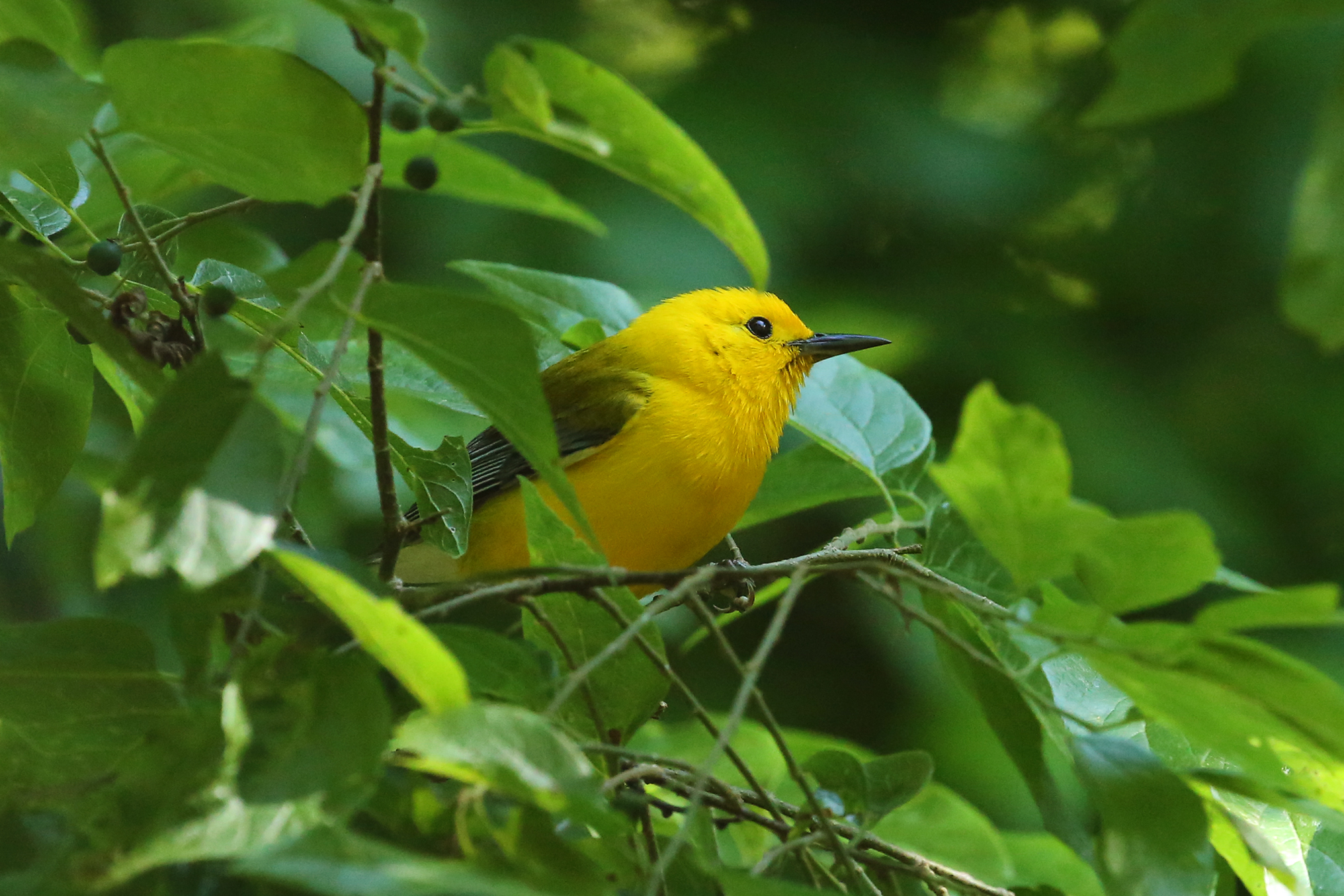
Warblers are the highlights of the spring migration. We saw 17 species of warbler on this trip. Prothonotary warbler is our favorite.
We decided on two trip birds. The other was a life bird for Mary that we never dreamed we could get at a place as busy with birders as High Island. But on Saturday, April 20th, while we were sitting in the "grandstands" at the water drip in Boy Scout Woods, a Pileated woodpecker flew in and landed in plain sight on a tree trunk less than 30 feed away from us. He took one quick look around and immediately flew away. We got about a half-second look ... but it was the best look that John has ever had at a Pileated woodpecker, and it was the fourth new bird for Mary on the trip. Her life birds, in chronological order, were Franklin's gull at Rollover Pass, Gray-cheeked thrush at the drip, Cerulean warbler just outside Hook's Woods, and Pileated woodpecker at the drip site in Boy Scout Woods. John's only life bird was Franklin's gull. Our trip list is shown at the end of this web site.

Black-bellied whistling-duck in evening twilight

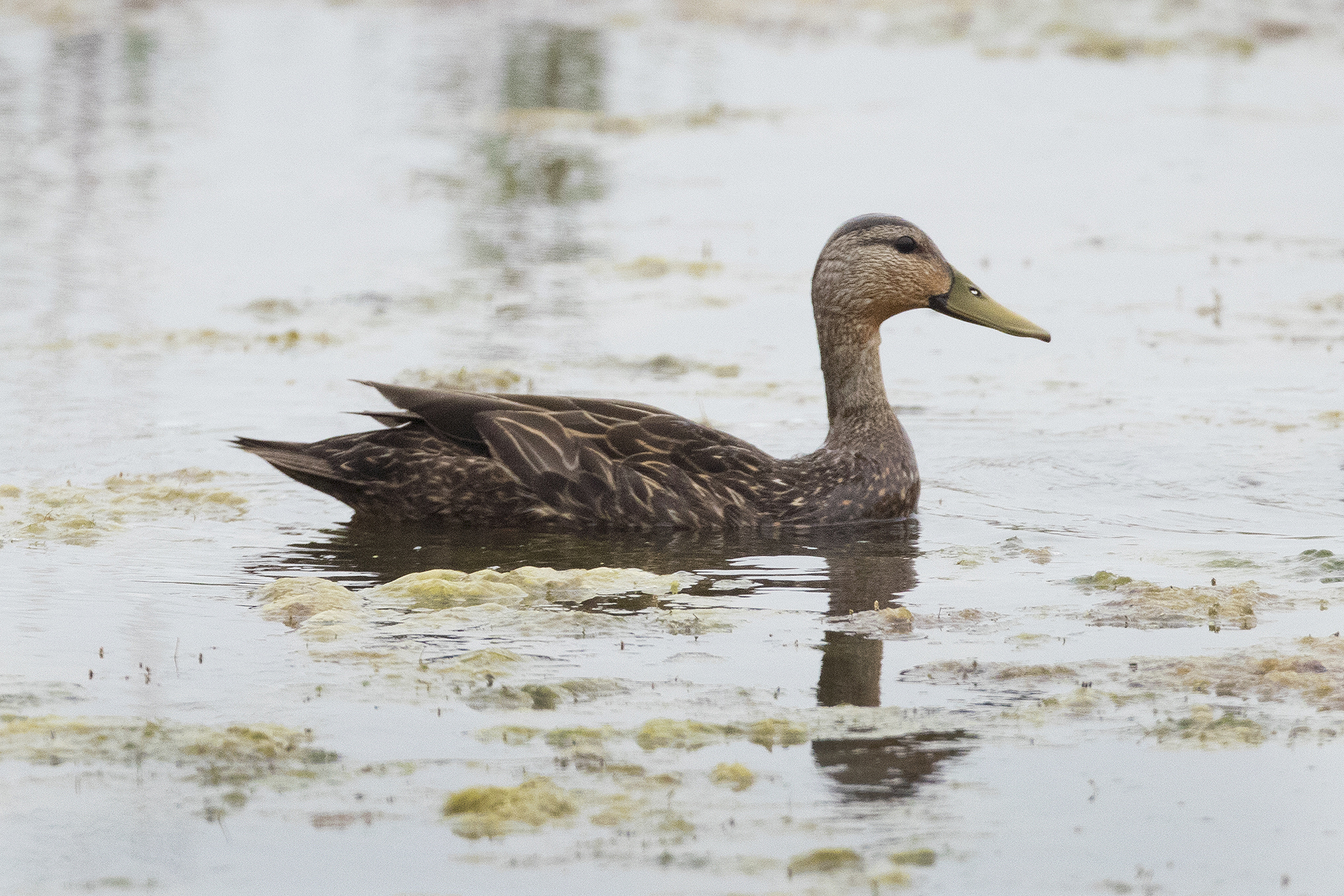
Mottled duck
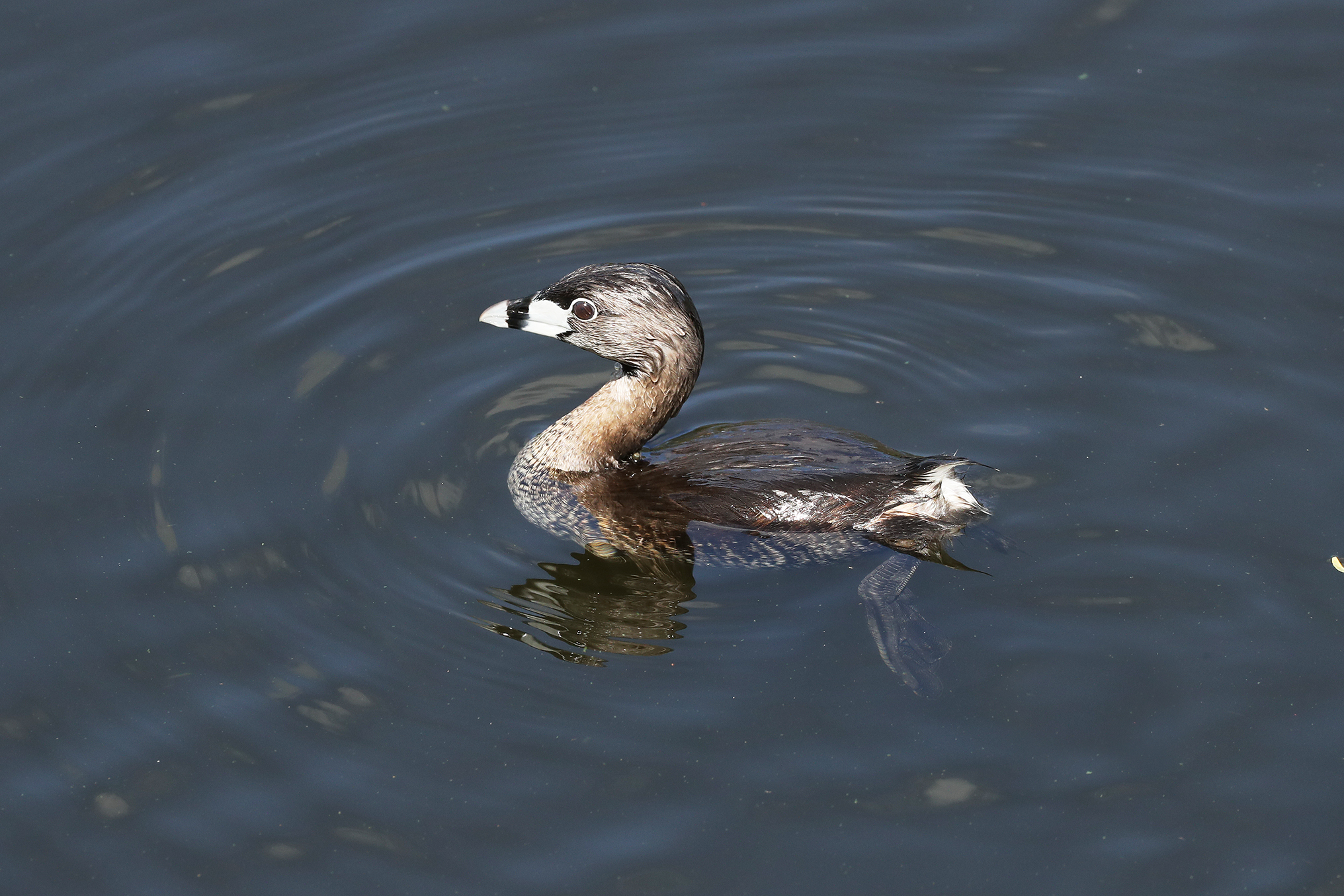
Pied-billed grebe

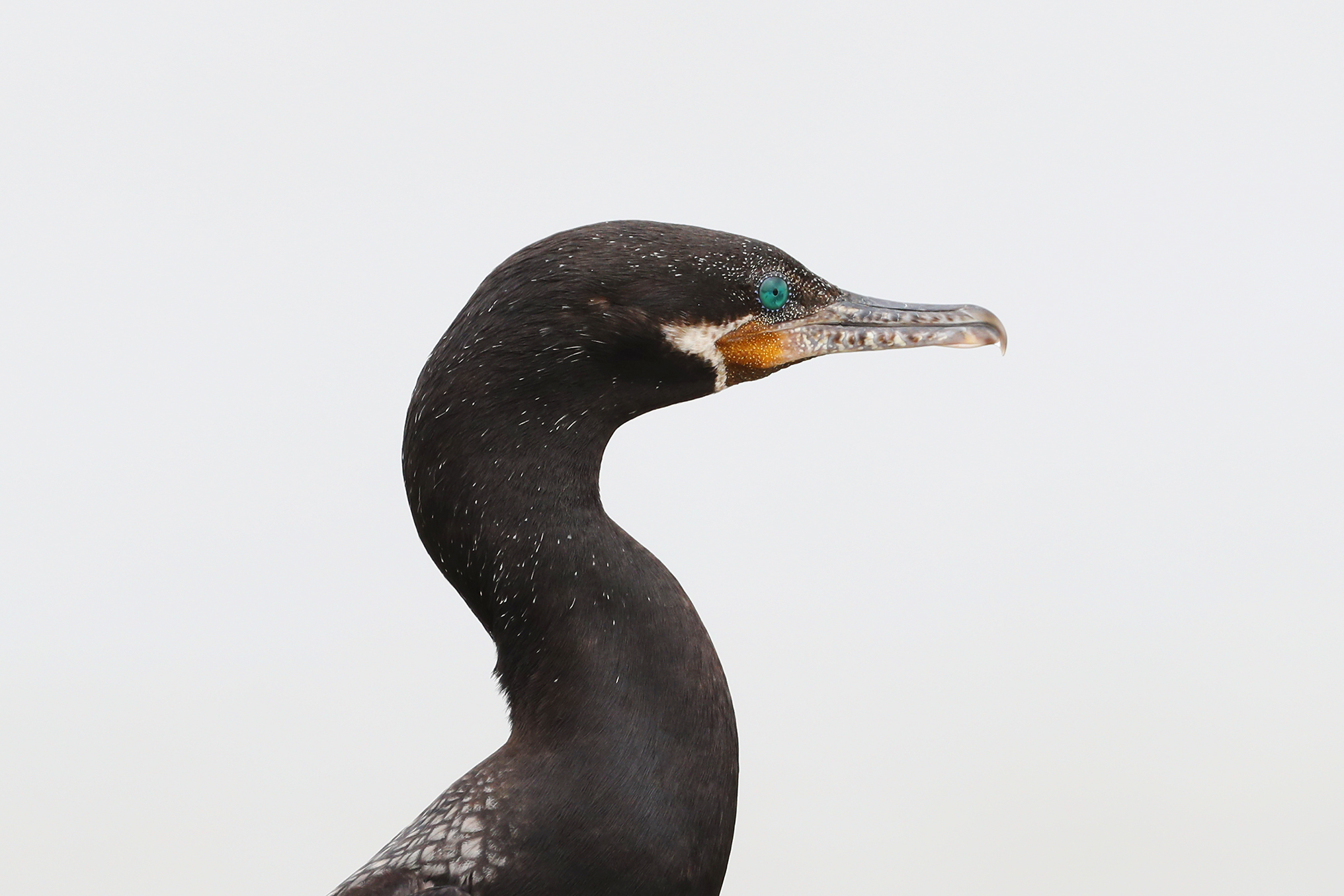
Neotropic cormorant in breeding plumage
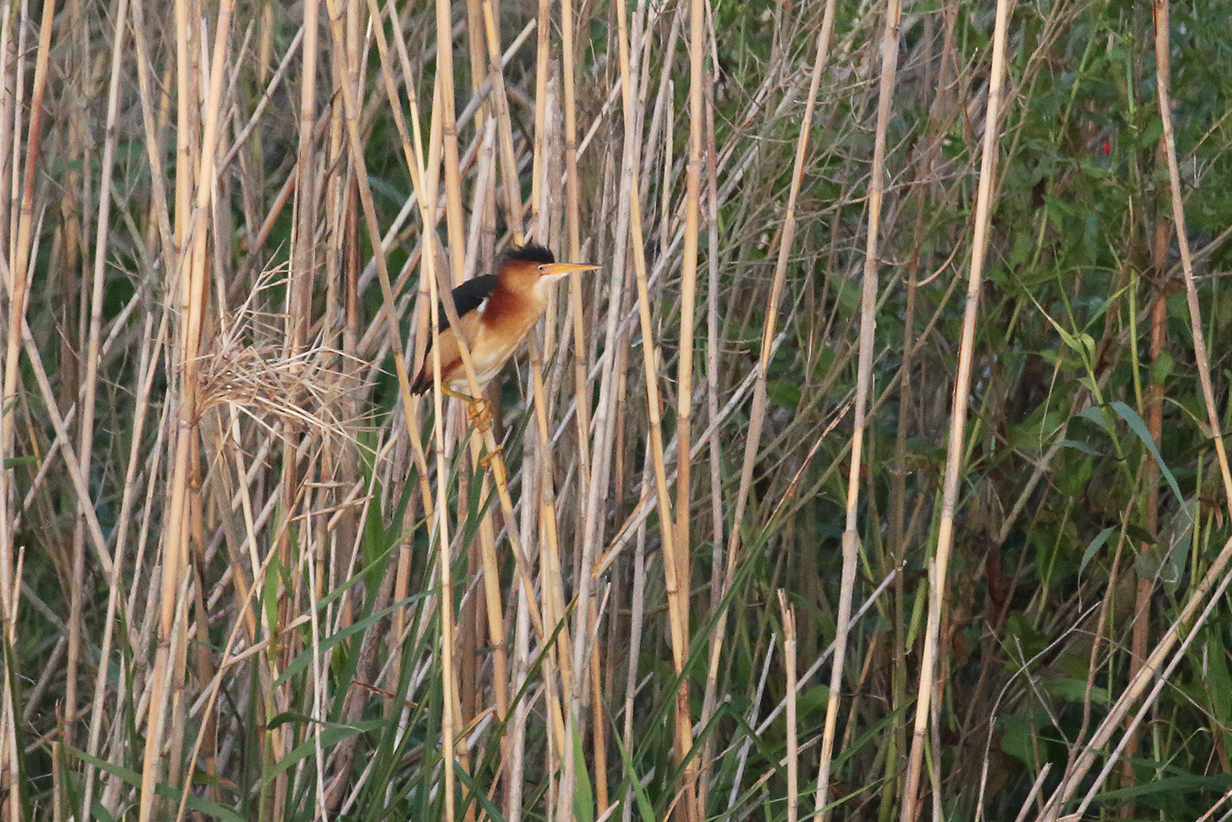
Least bittern in evening twilight
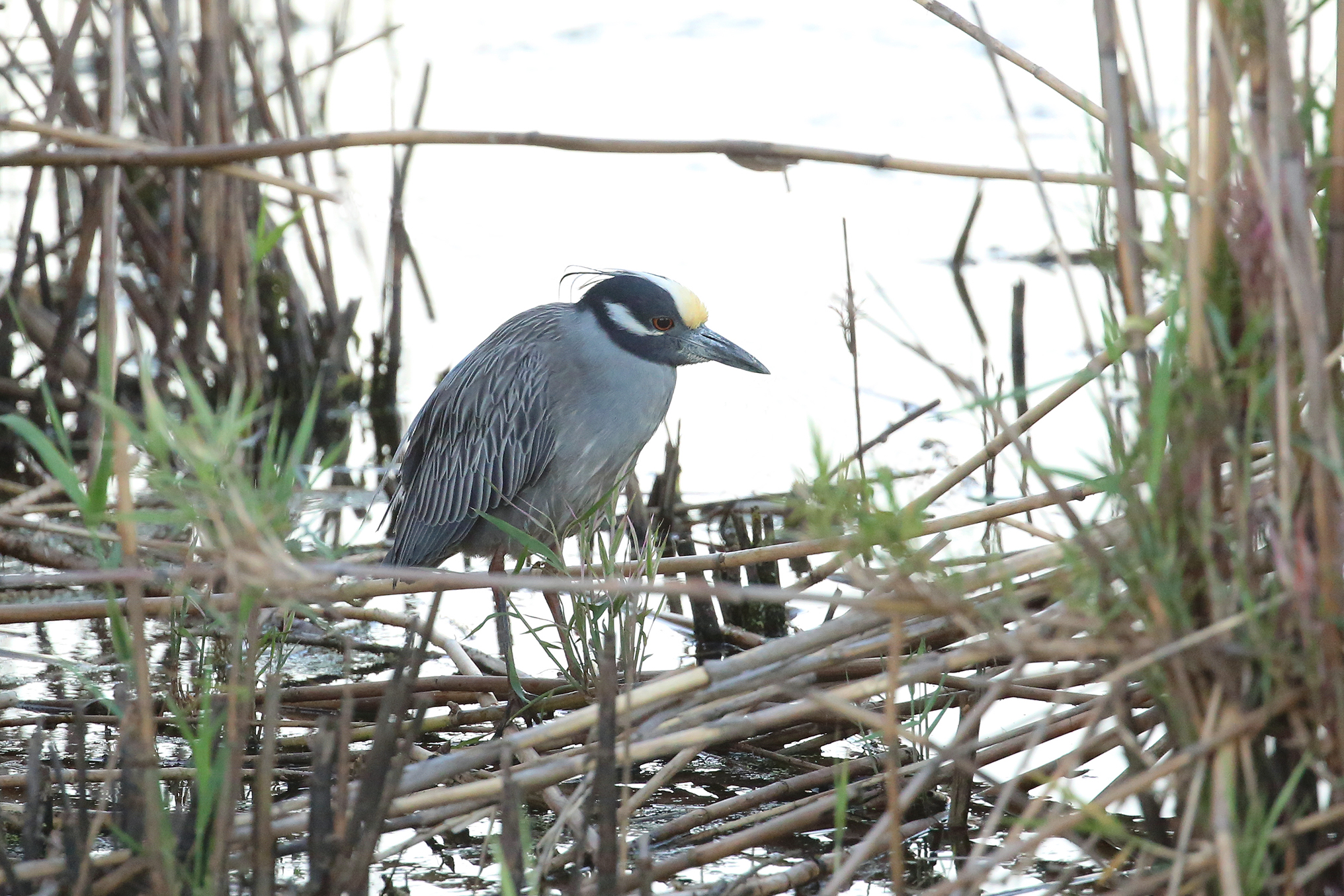
Yellow-crowned night-heron

Green heron

Tricolored heron
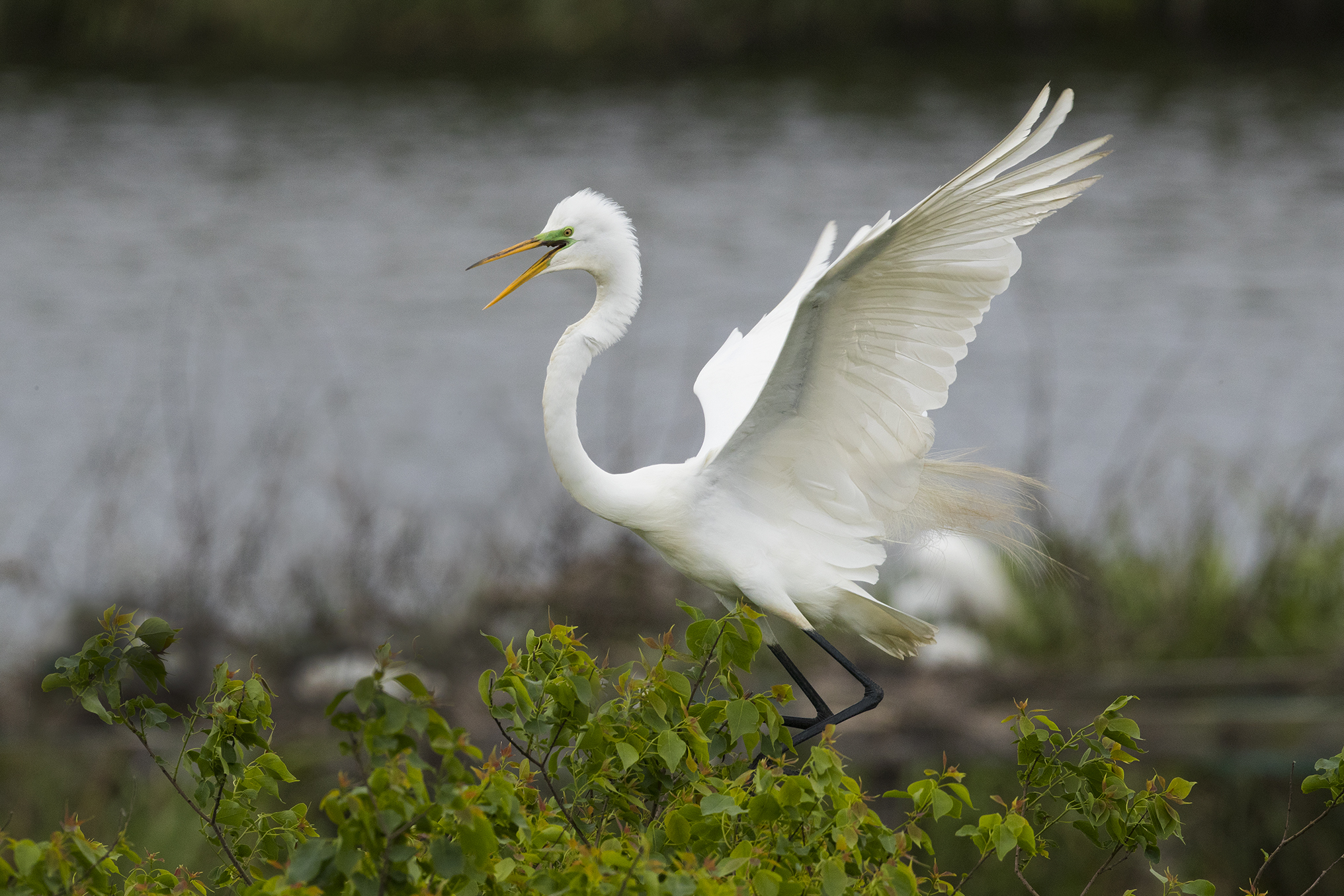
Great egret male in full breeding plumage
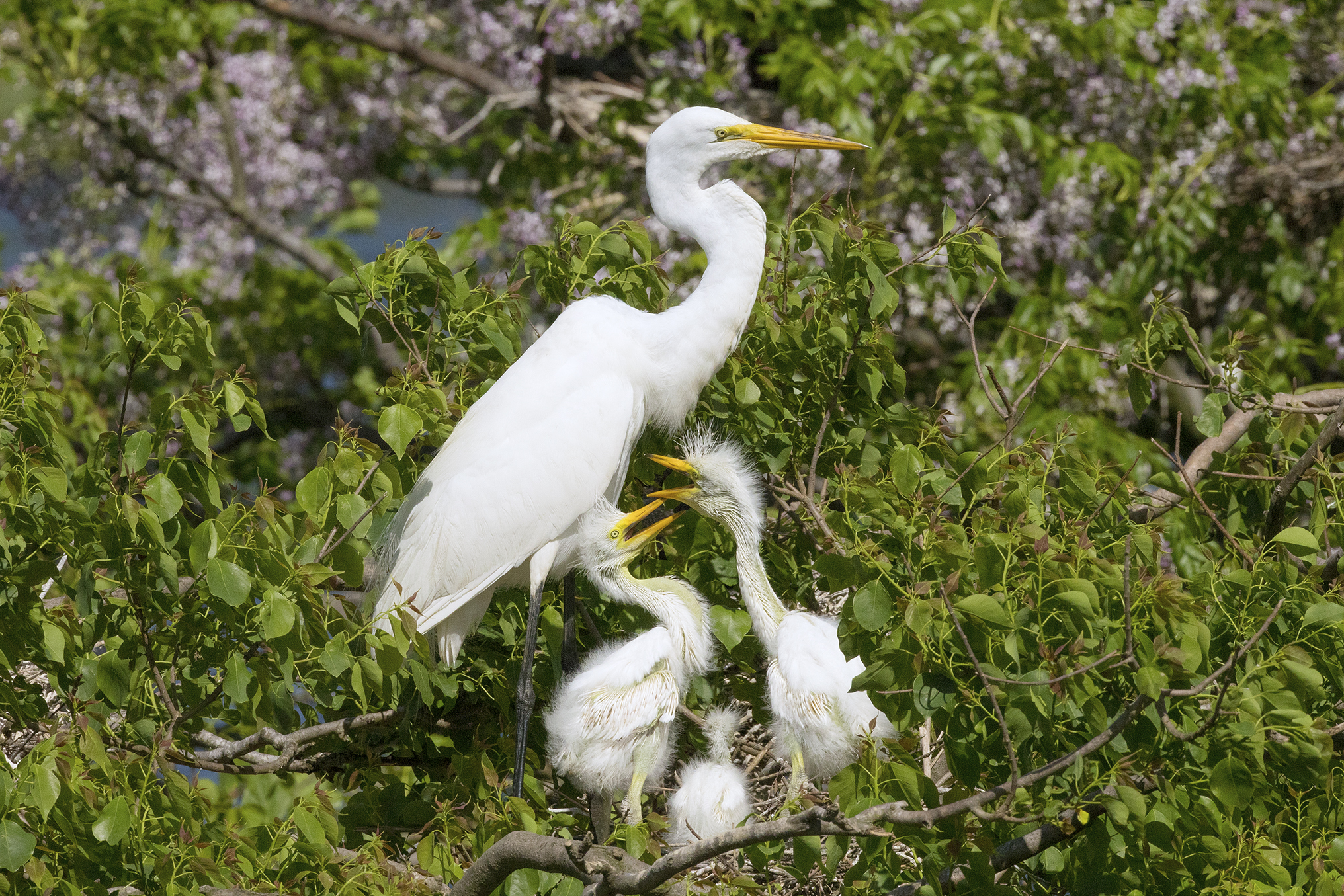
Great egret with two feisty chicks and one weak one. We fear that the weak chick will not survive.
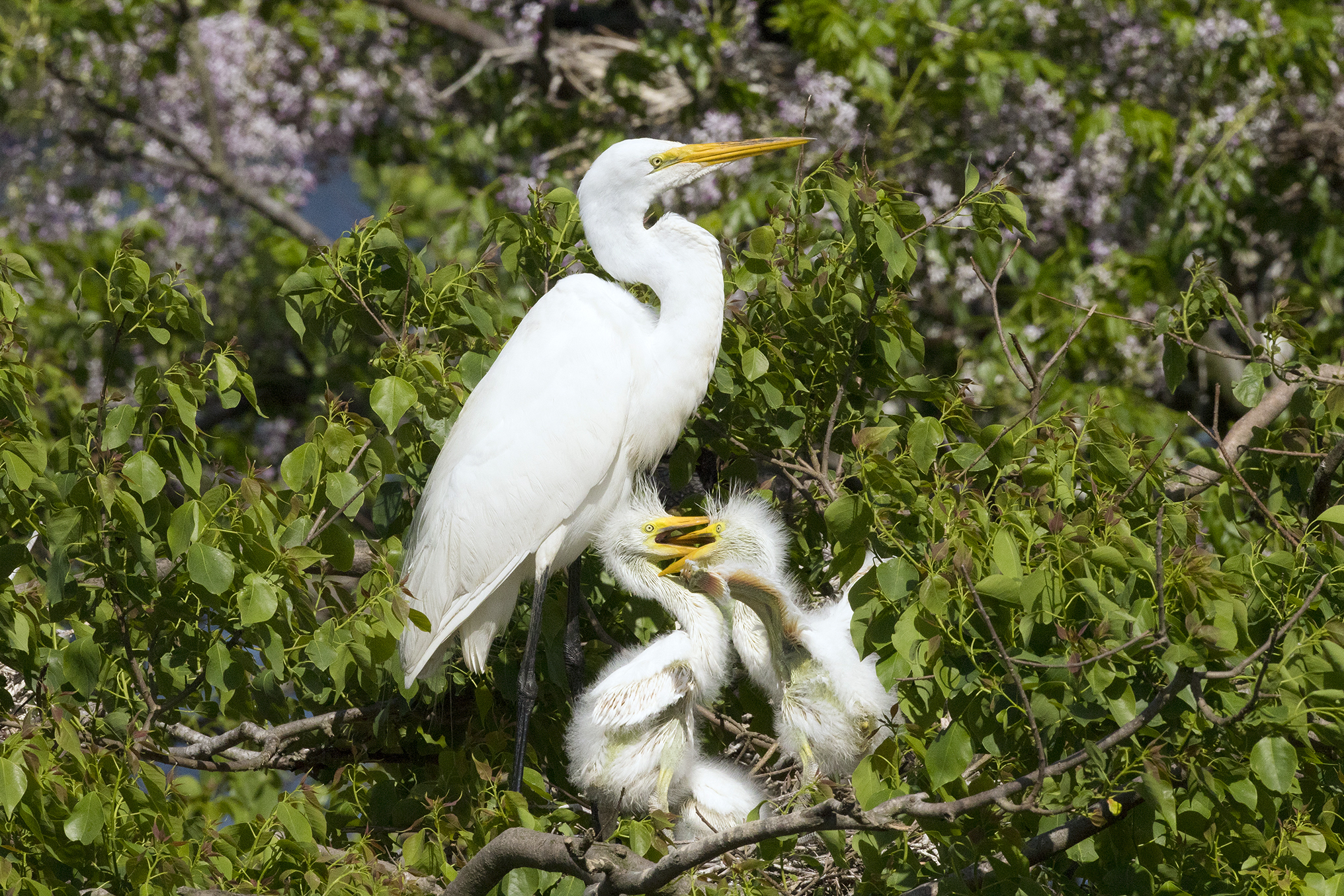
The feisty chicks fought with each other over food, and they ganged up to peck the weaker chick.

Complaining and begging did not help.
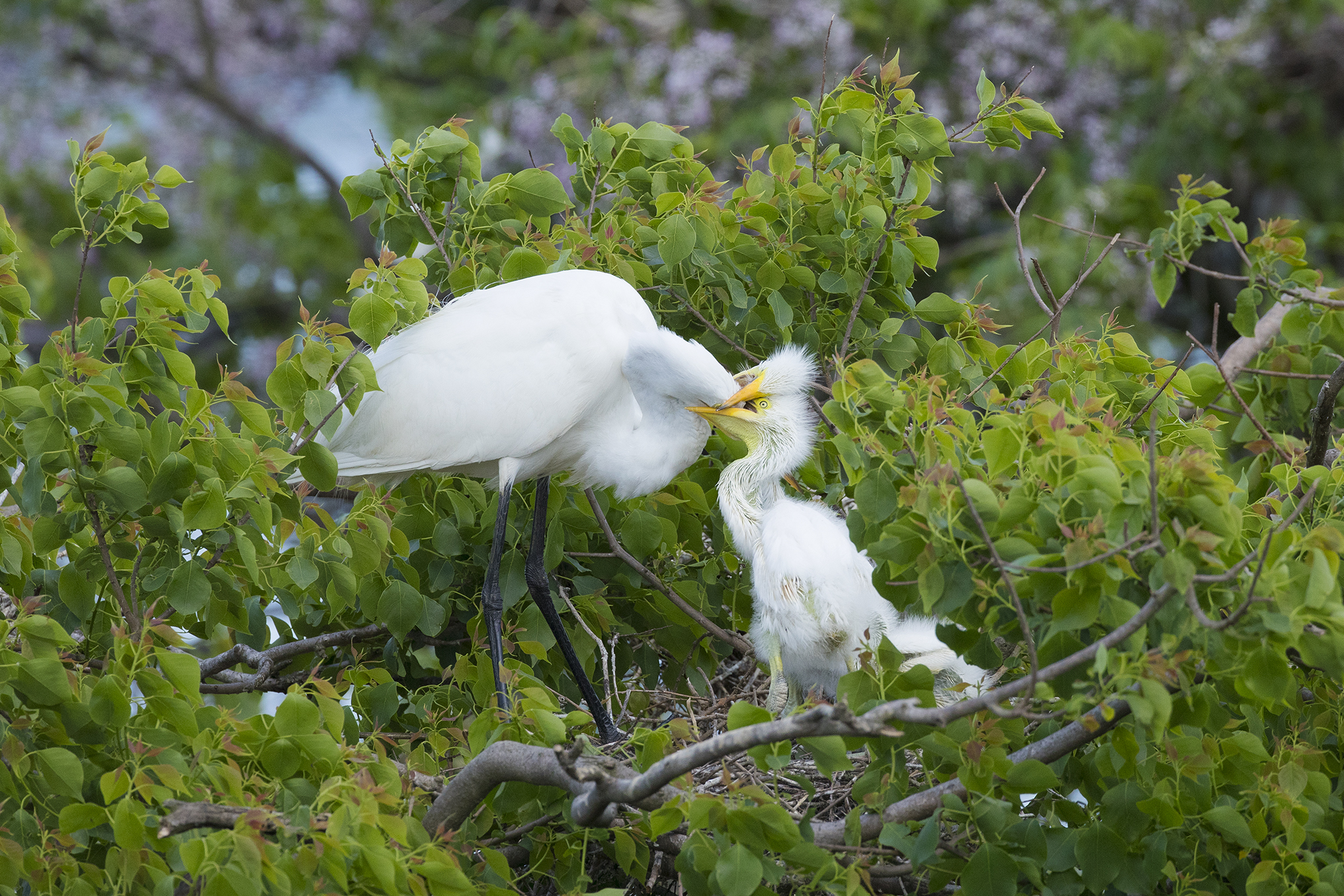
"Grabbing the bull by the horns "" -- so to speak -- did not help.
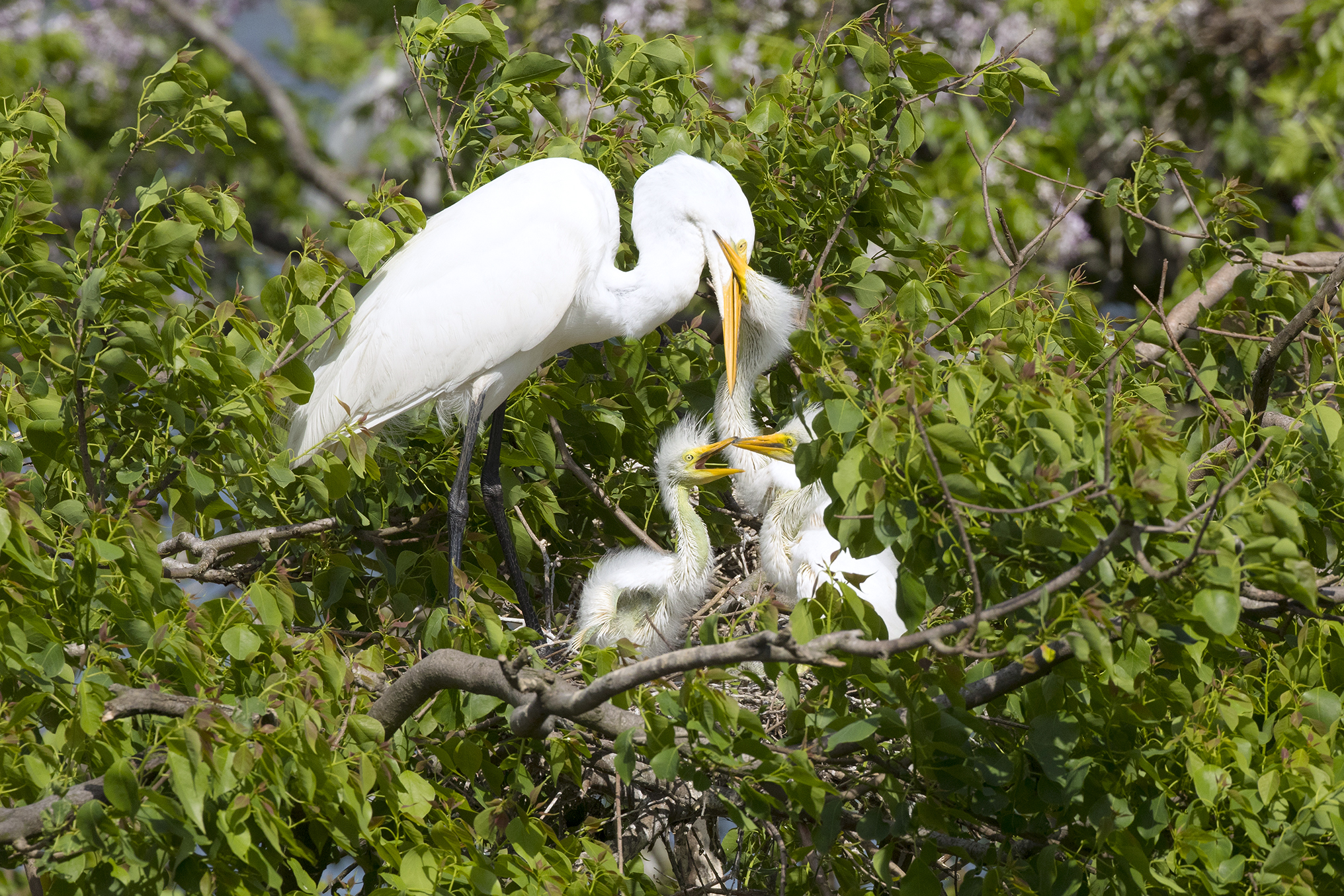
Meanwhile, the smallest chick was not ready to give up.

Great blue heron (itchy)
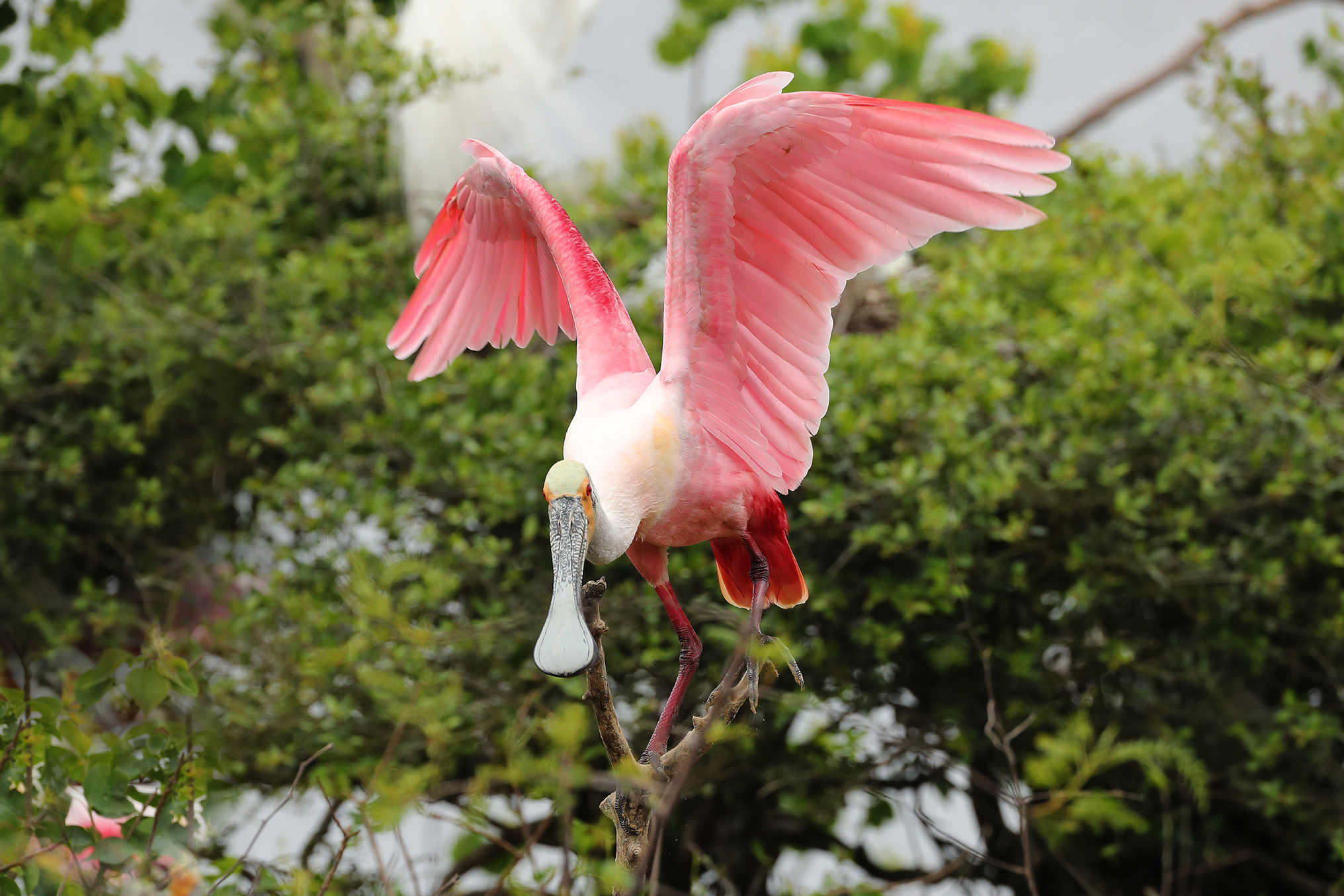
Roseate spoonbill
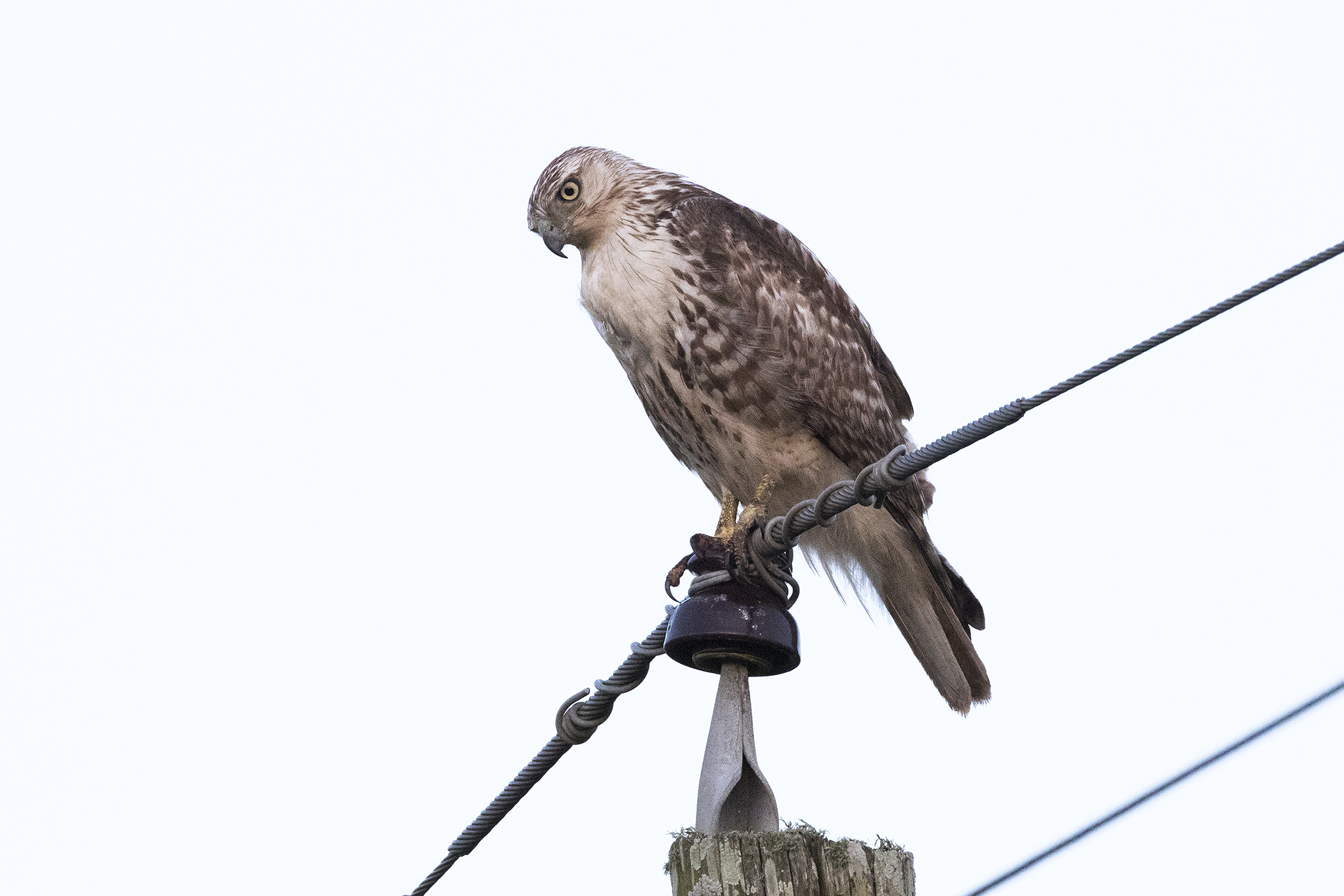
Red-tailed hawk in evening twilight
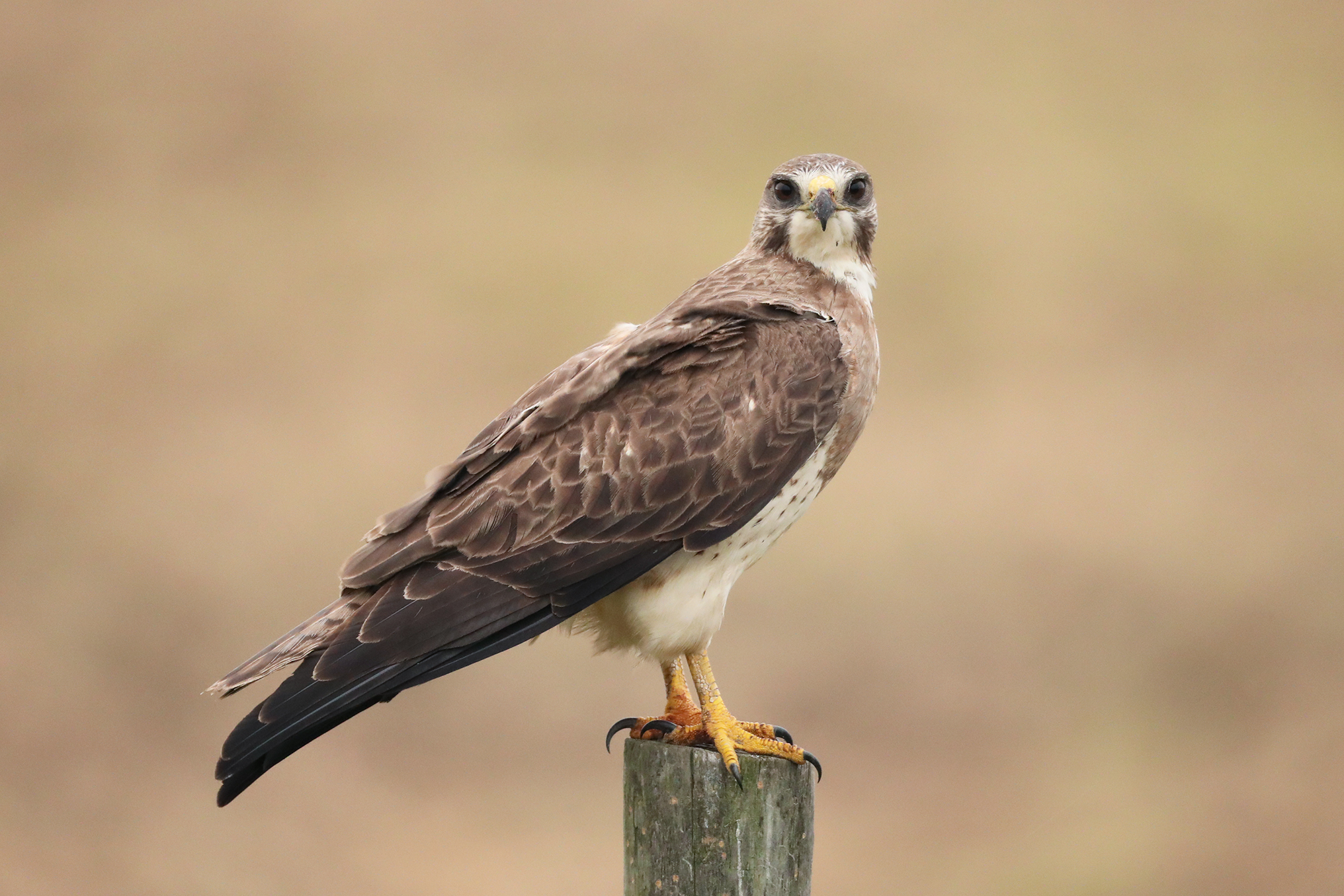
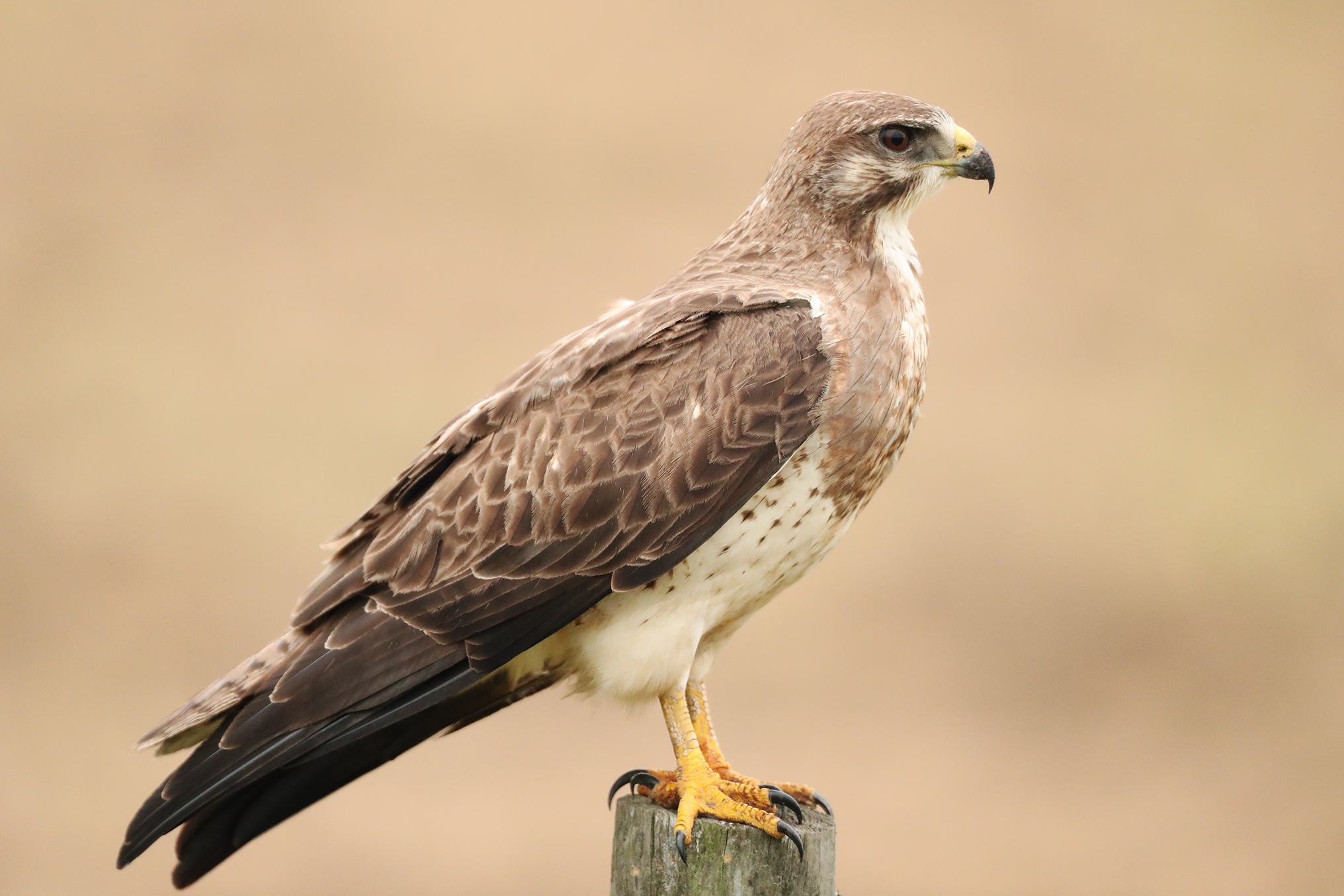
Swainson's hawk in evening twilight
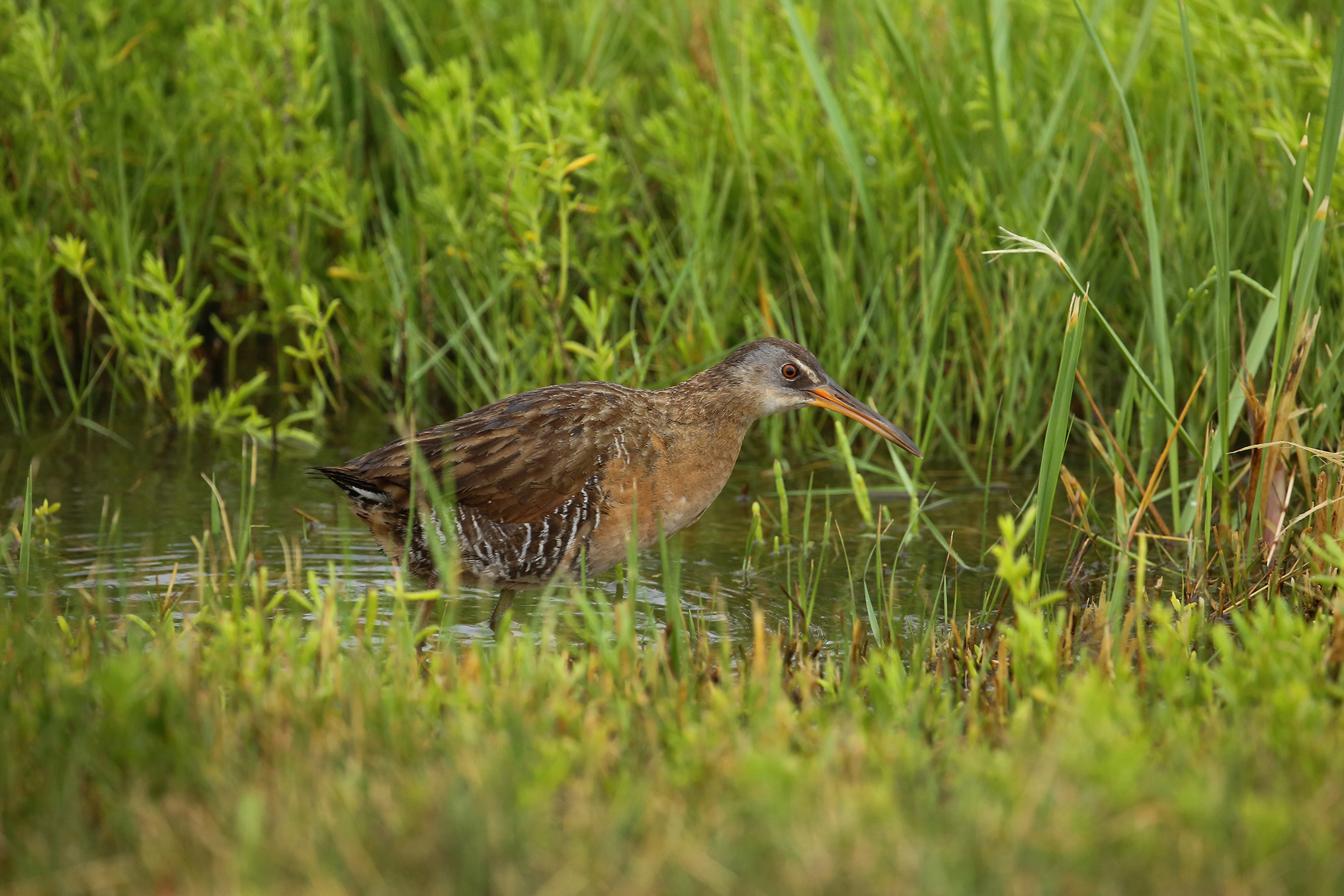

Clapper rail
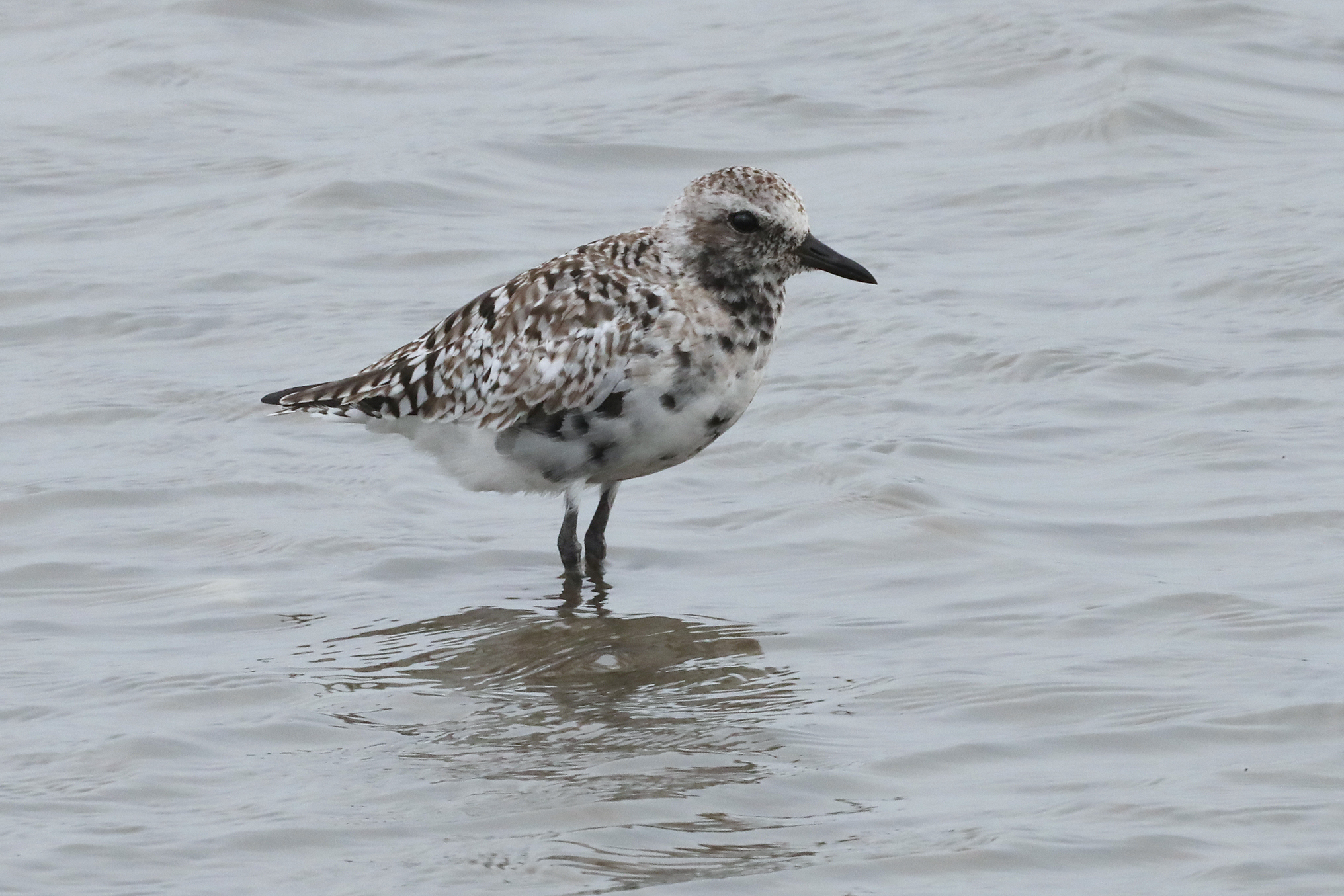
Black-bellied plover still a long way from breeding plumage
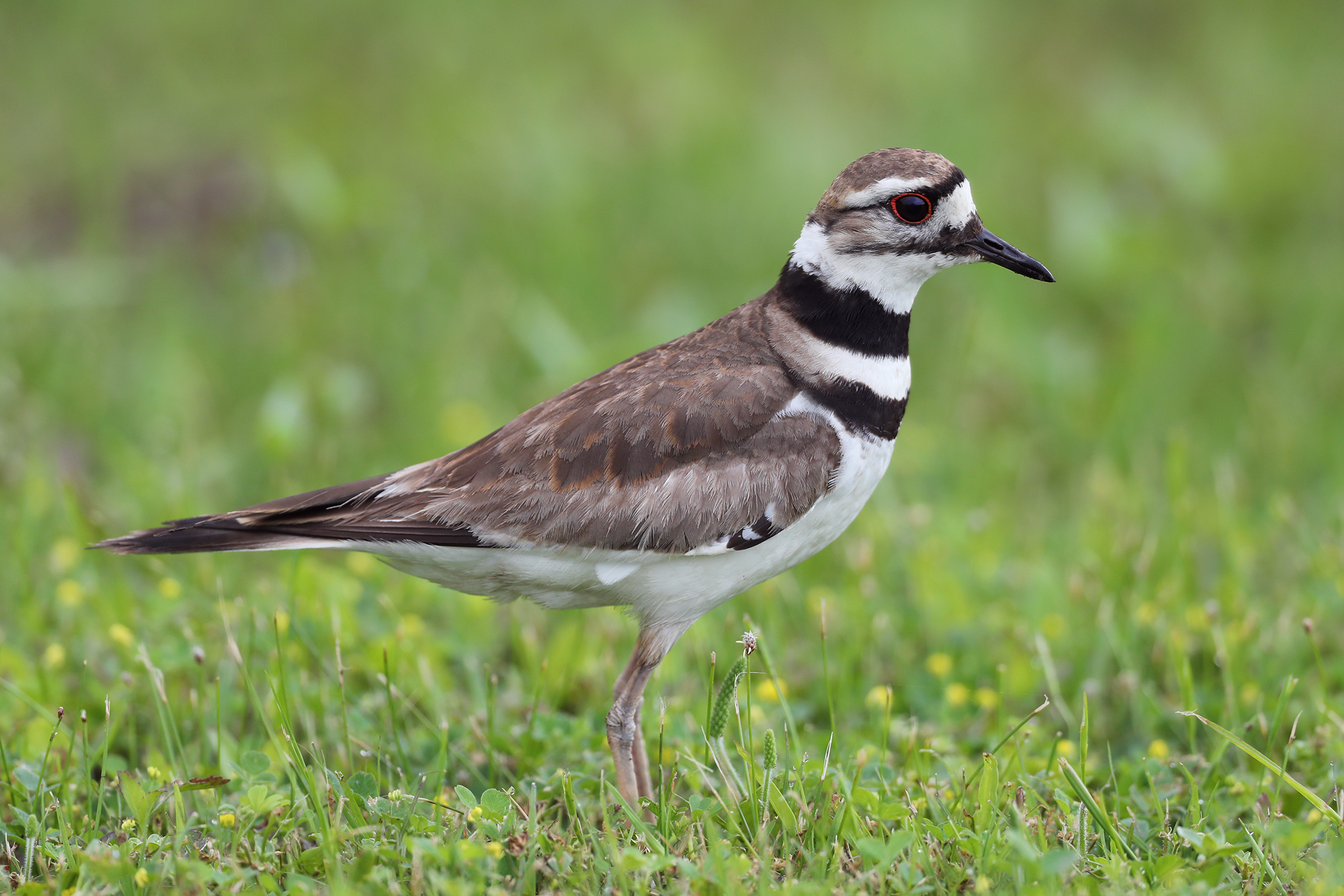
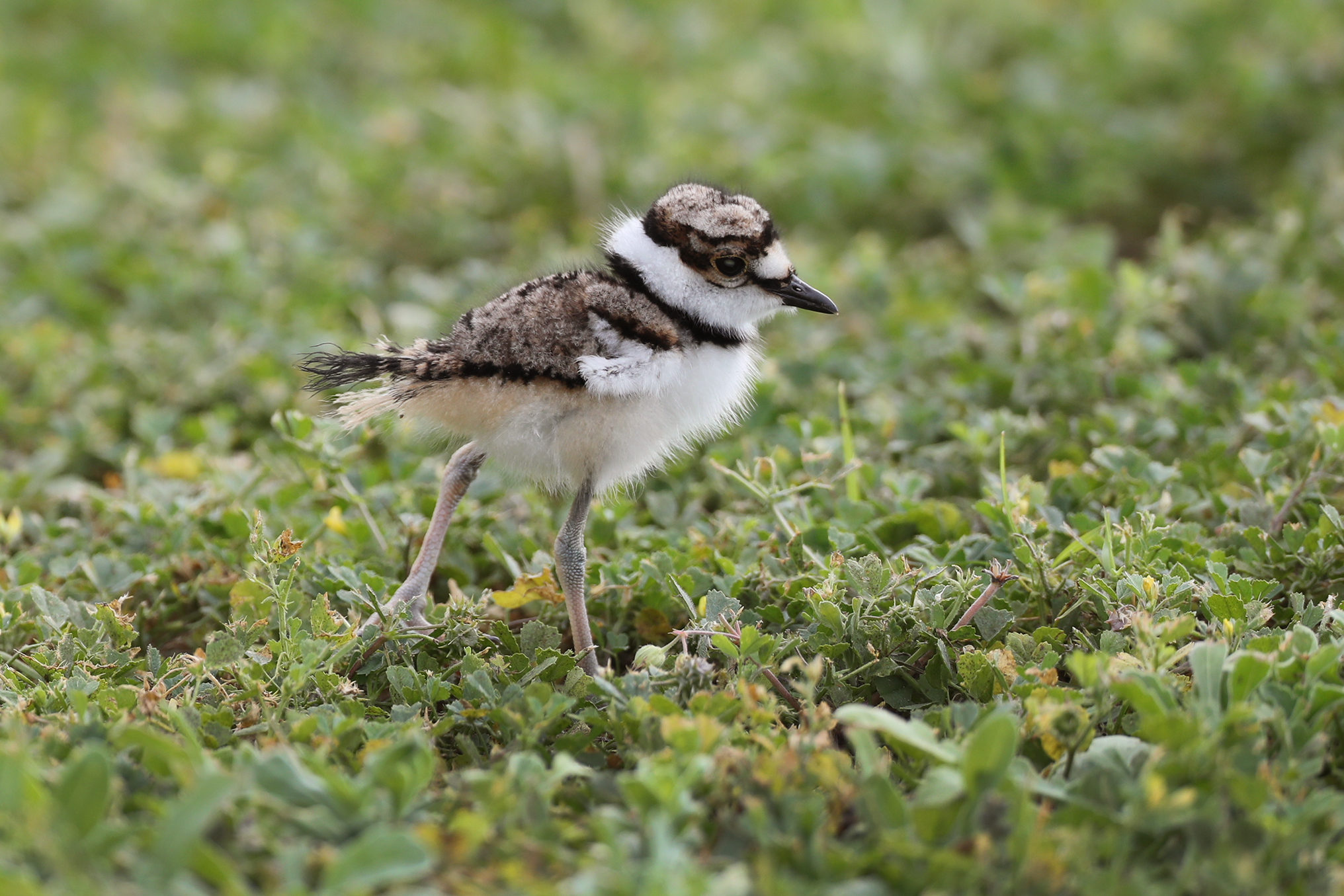
Killdeer adult and chick
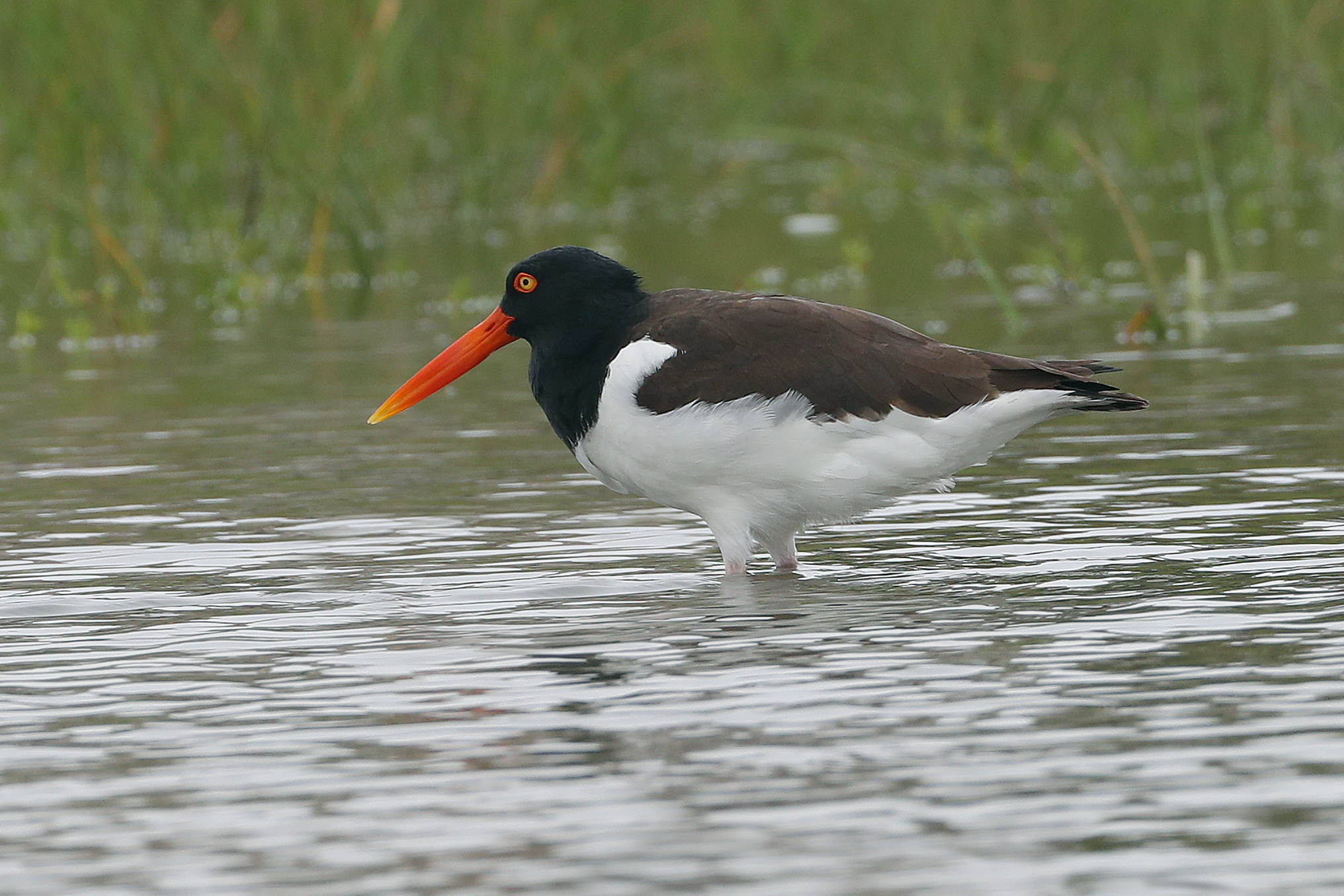
American oystercatcher

American avocet
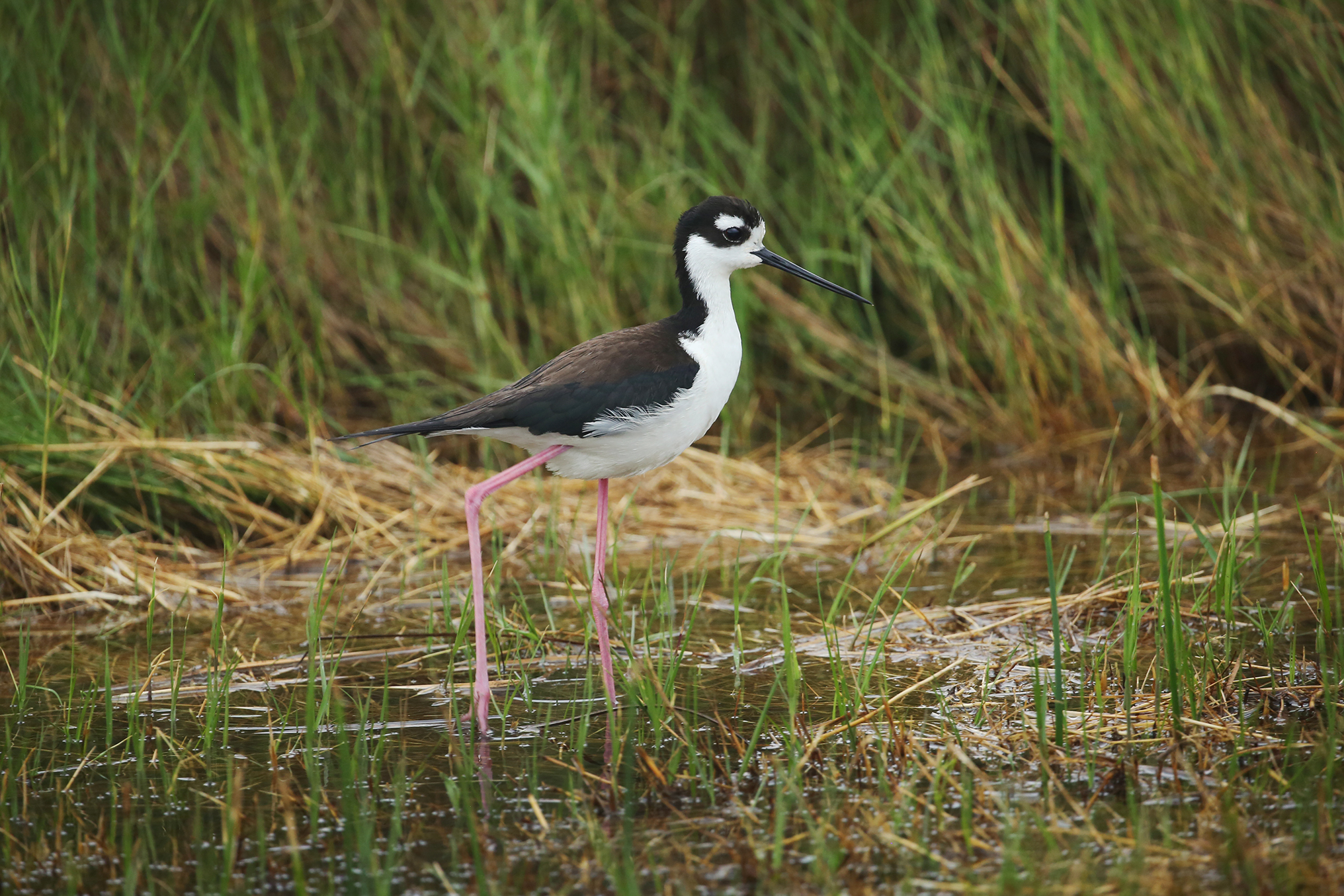
Black-necked stilt
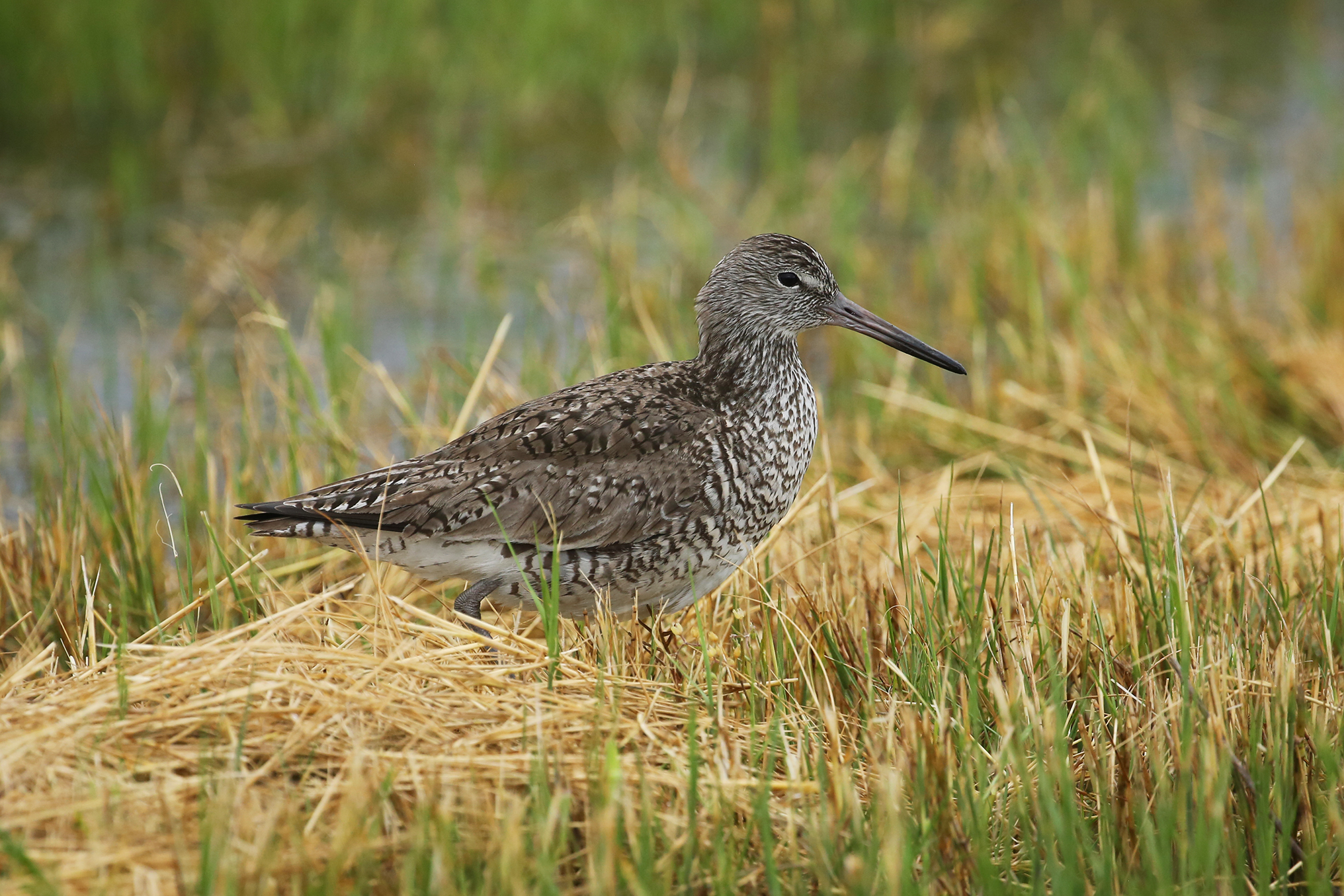
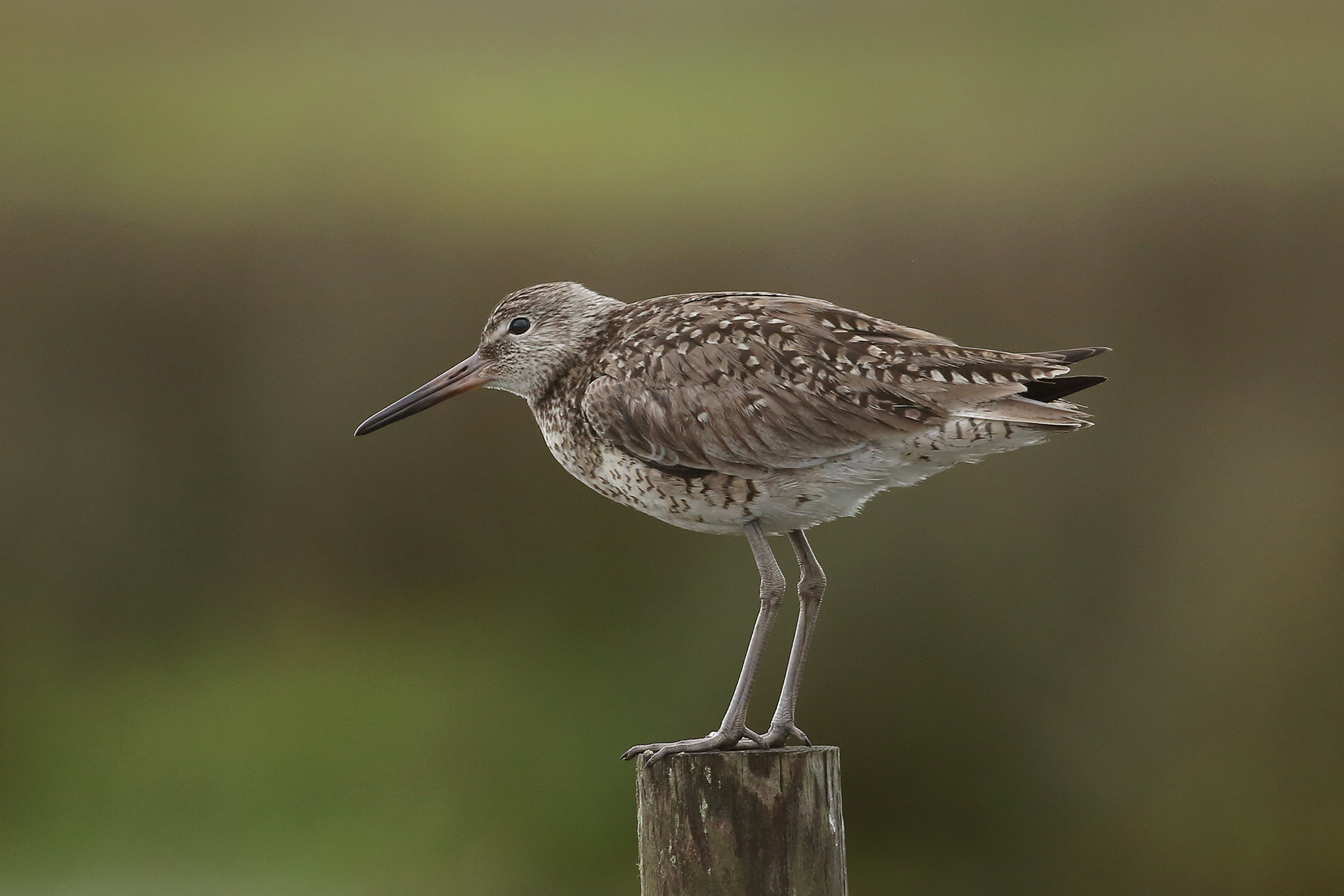
Willet in breeding plumage
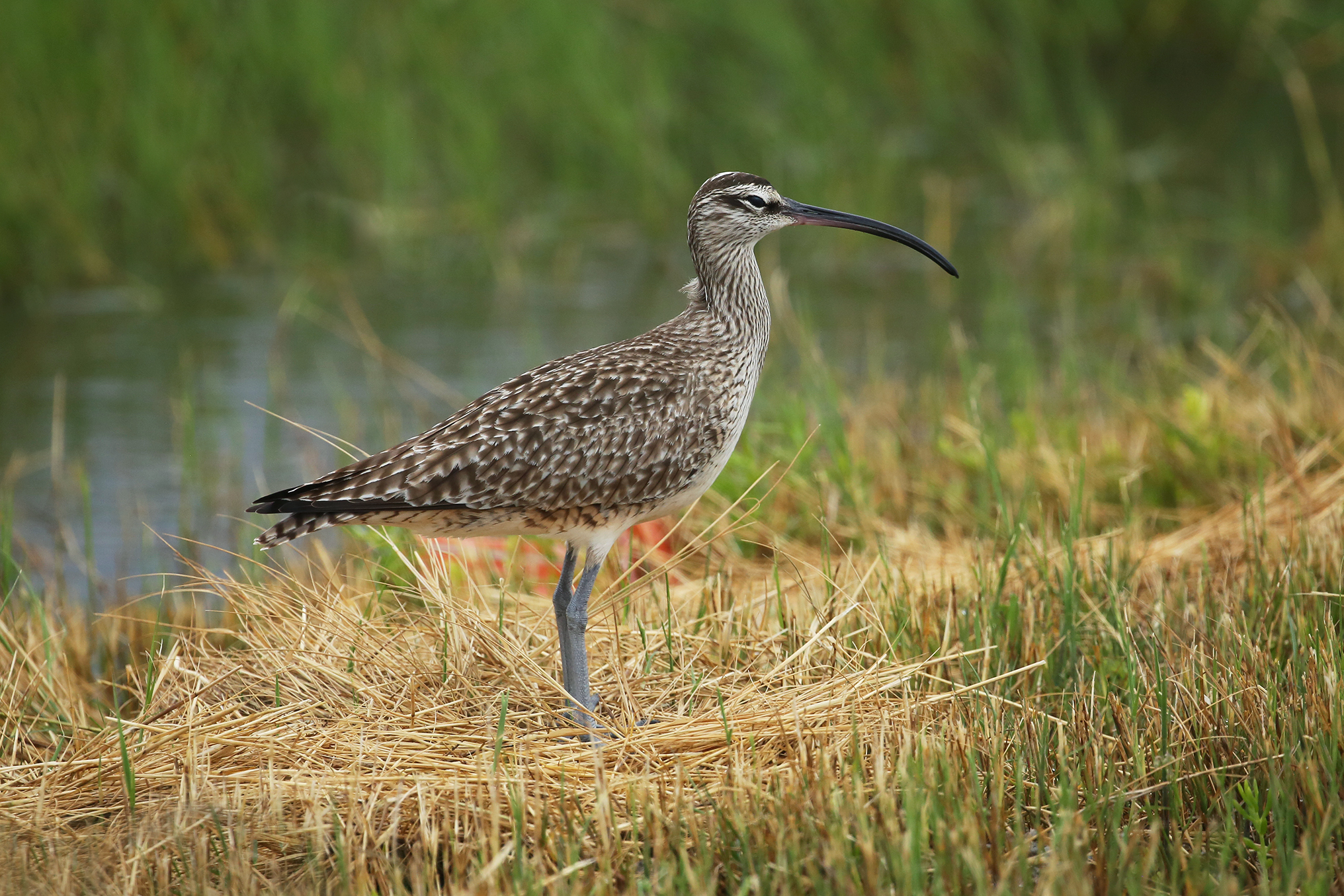
Whimbrel
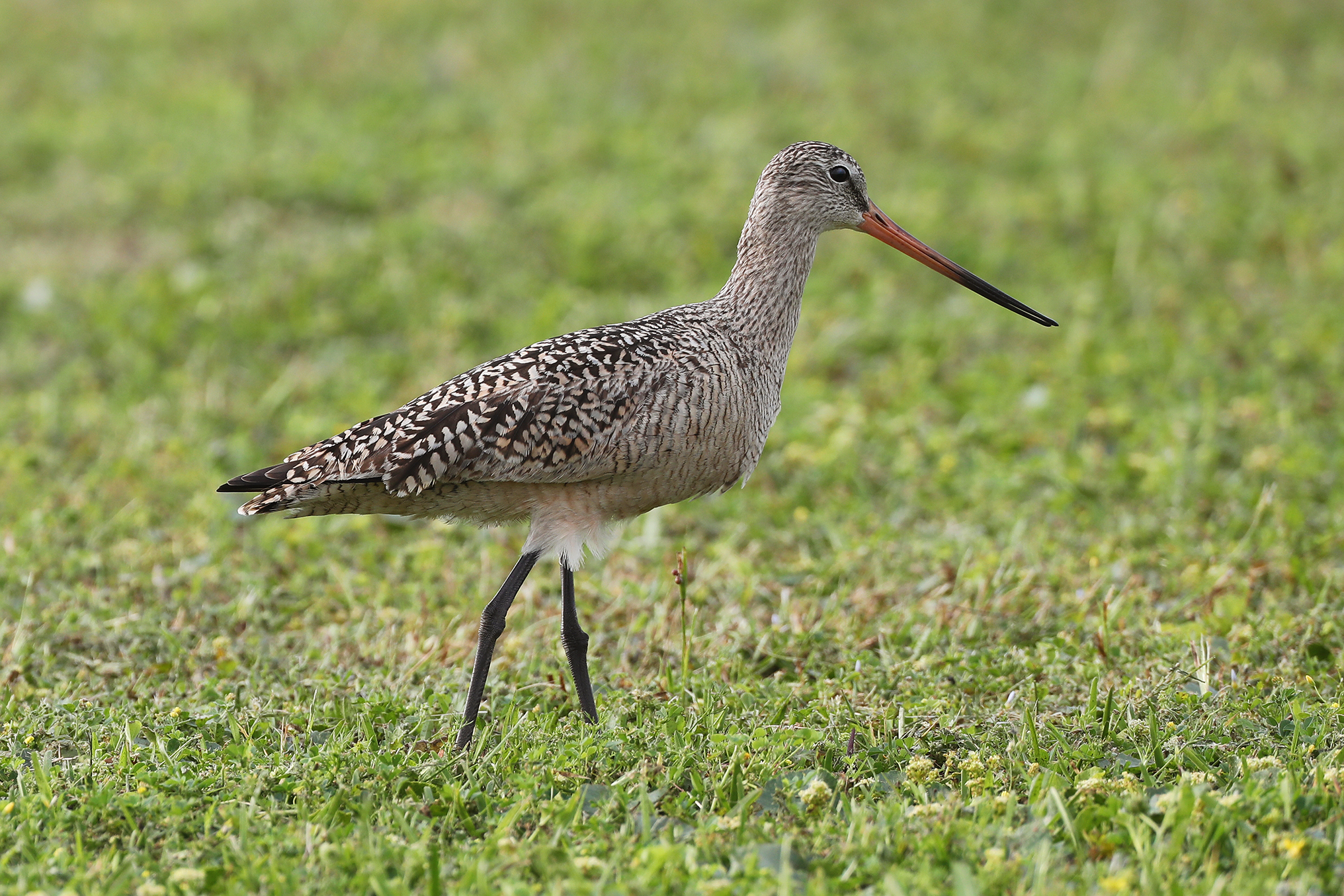
Marbled godwit

Ruddy turnstone pretty much in breeding plumage
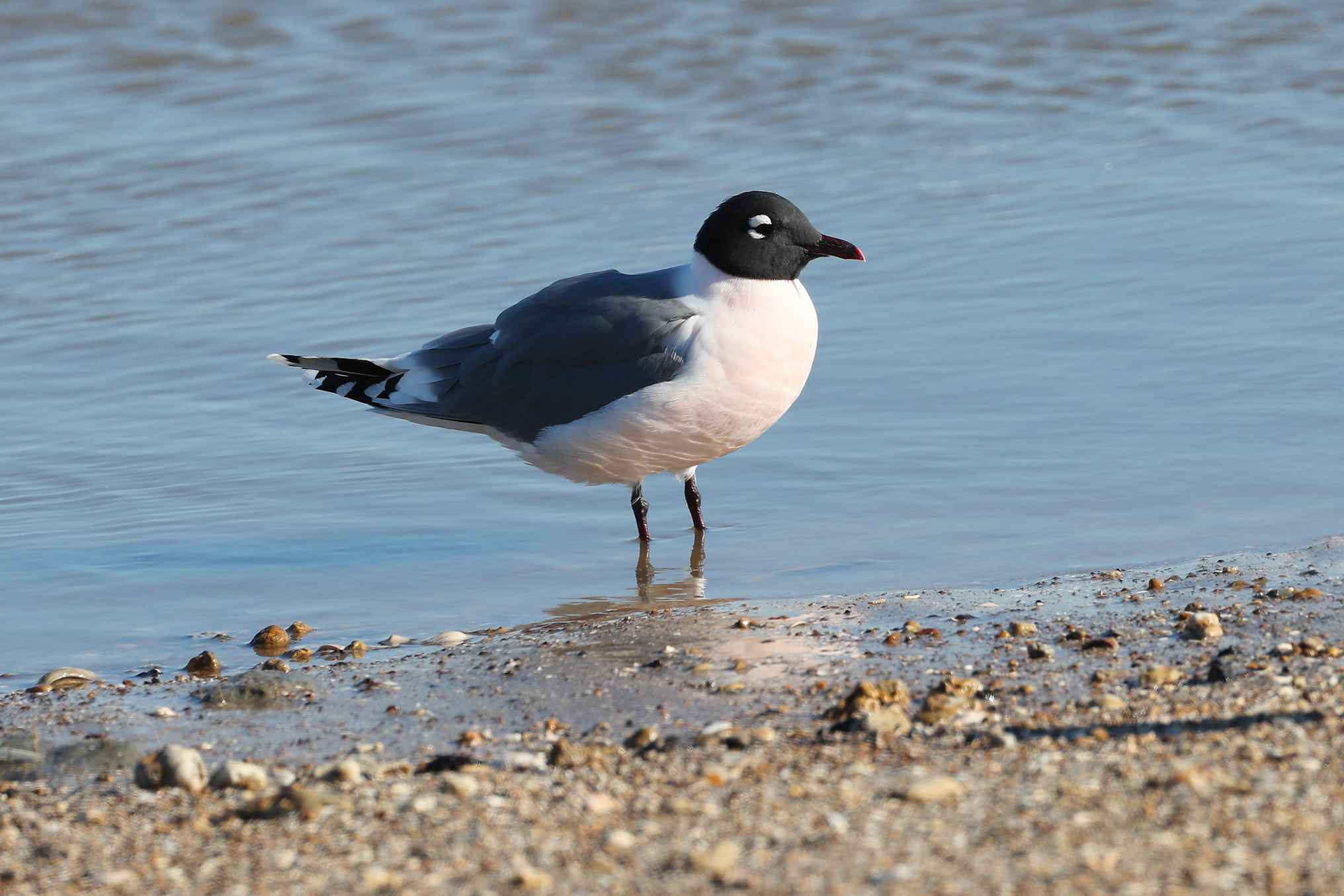
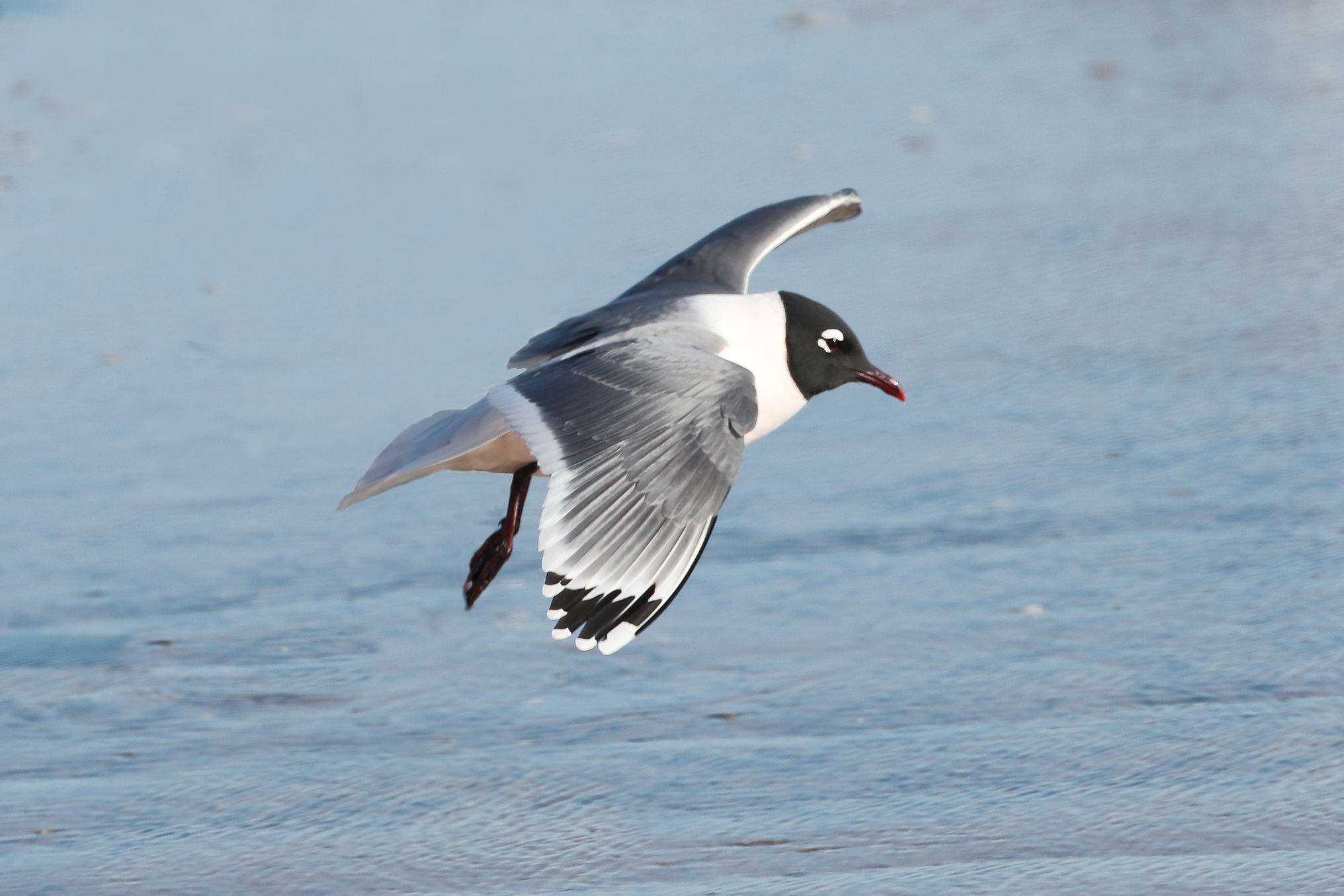
Franklin's gull (This was the only species that was a life bird for both of us. Note the white spots in the wingtips and the pinkish belly.)

Laughing gull (in the back) has all-black wing tips, whereas Franklin's gull (in the front) has extensive white on the wing tips.

Sandwich tern
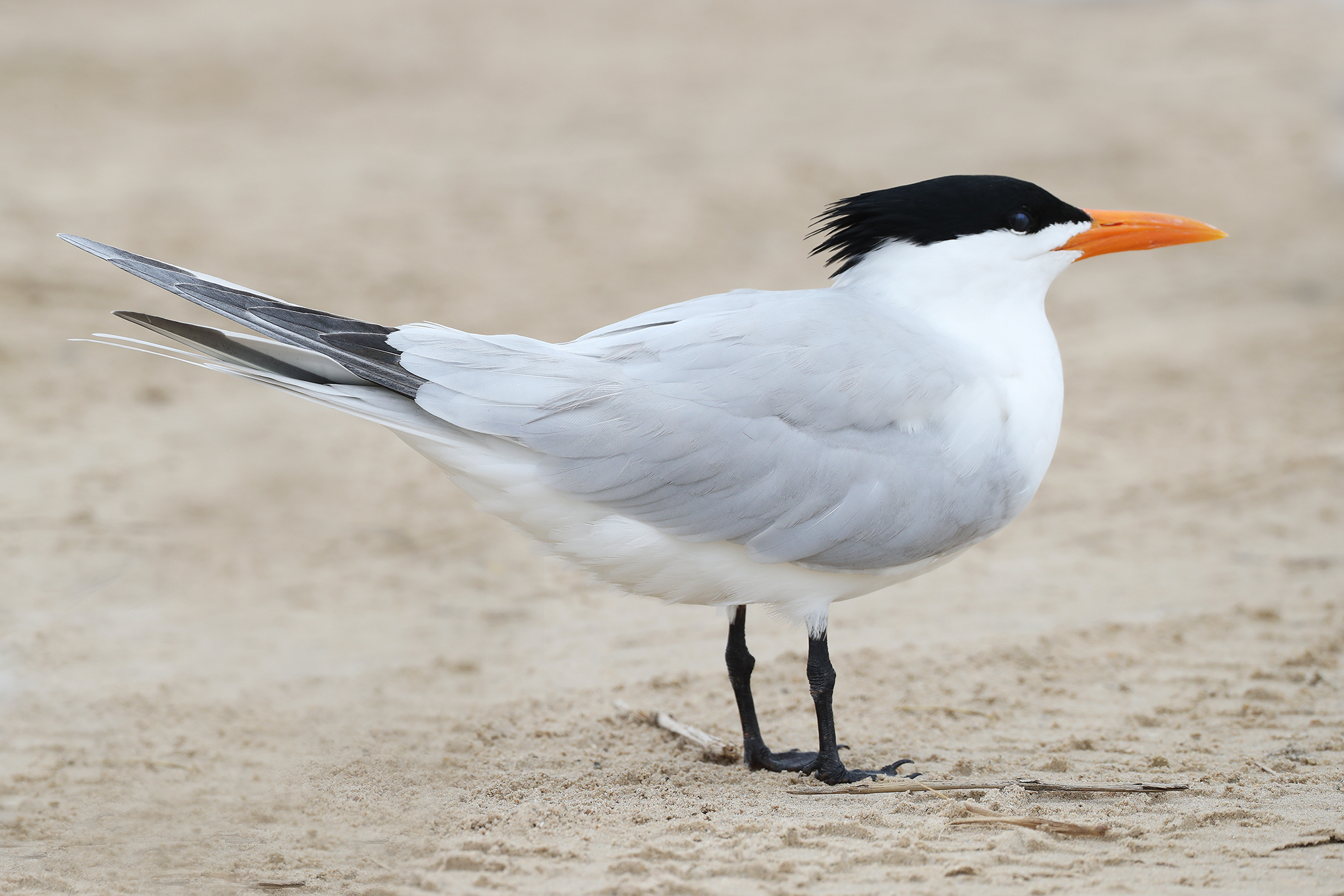
Royal tern

Least tern
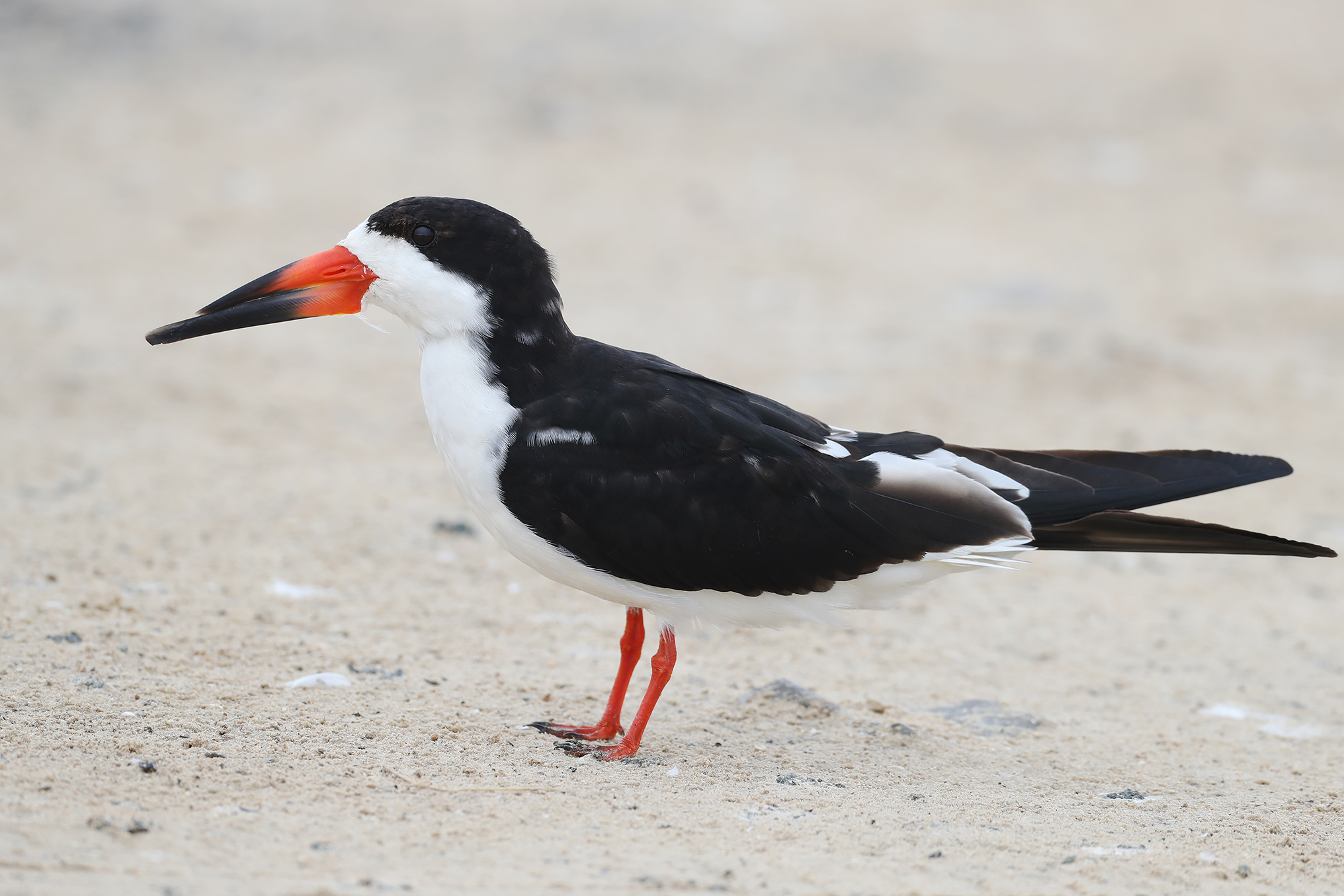
Black skimmer
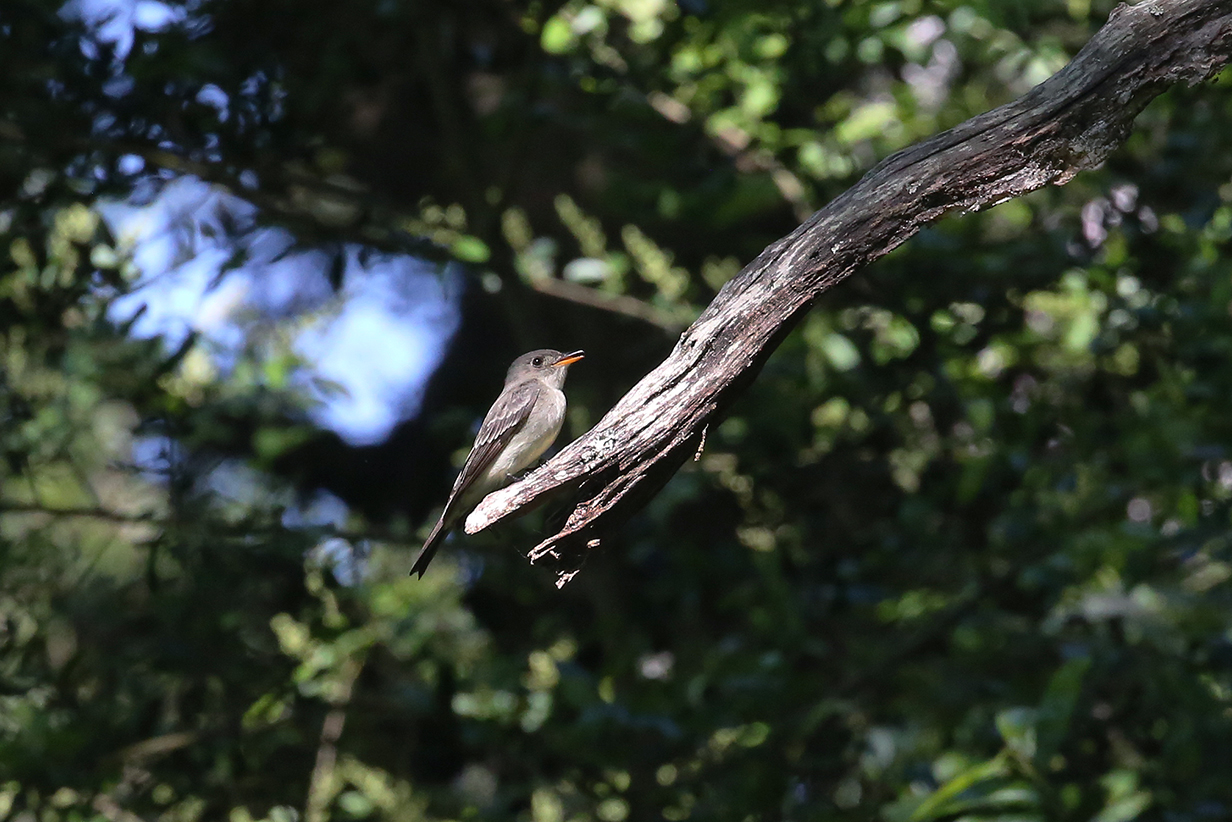
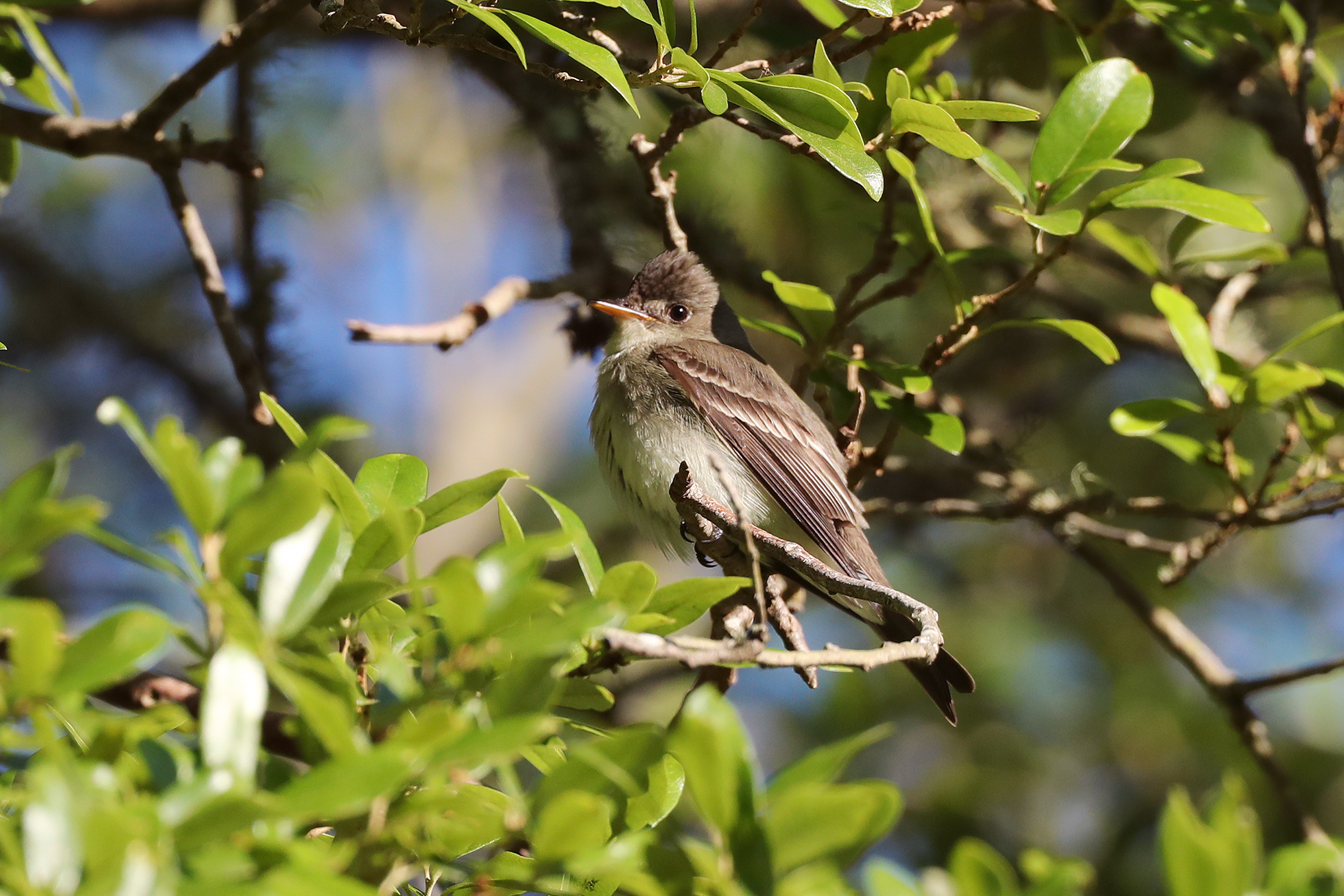
Eastern wood-pewee (Flycatchers were starting to arrive in good numbers by the end of our trip.)
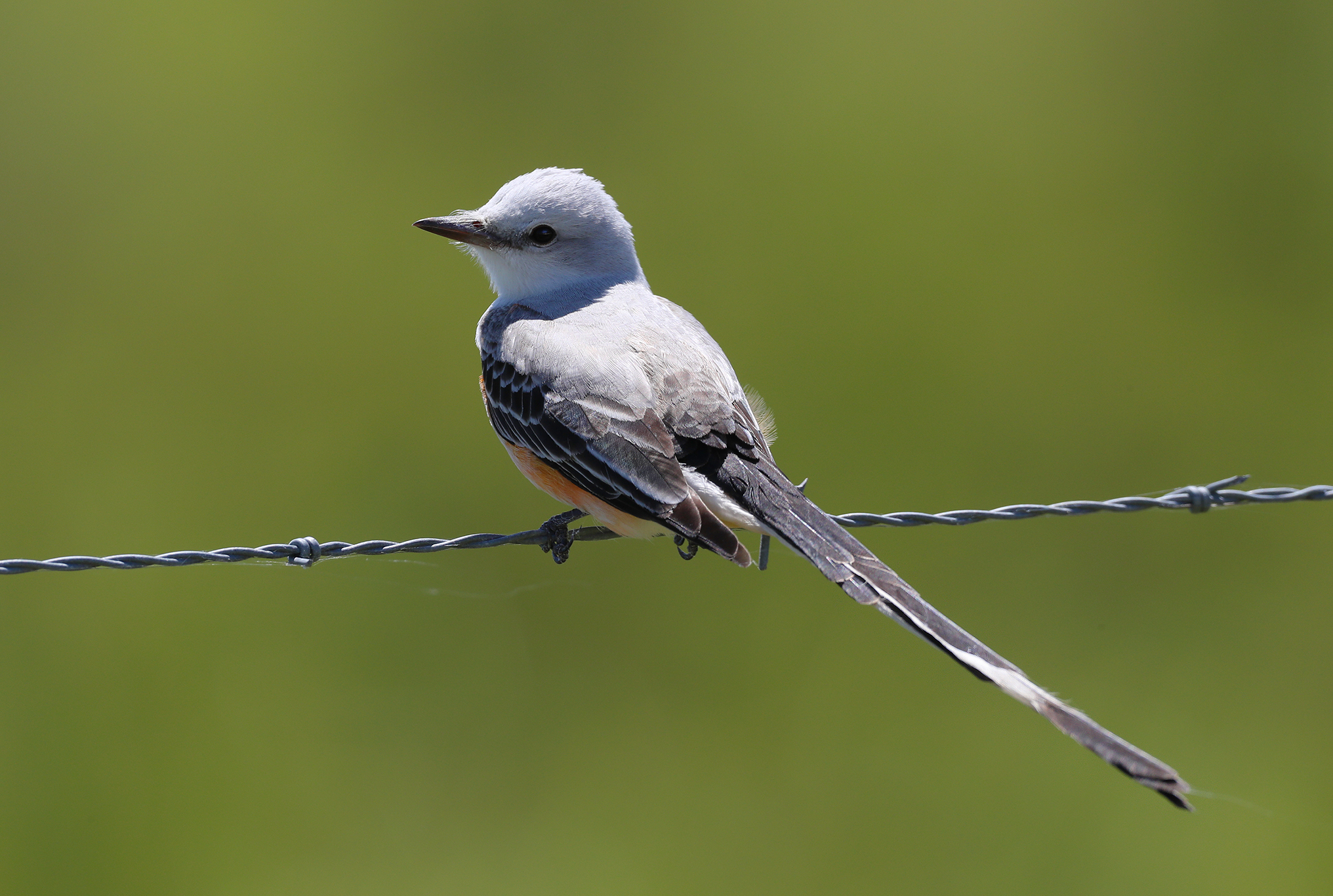
Scissor-tailed flycatcher

Blue-headed vireo
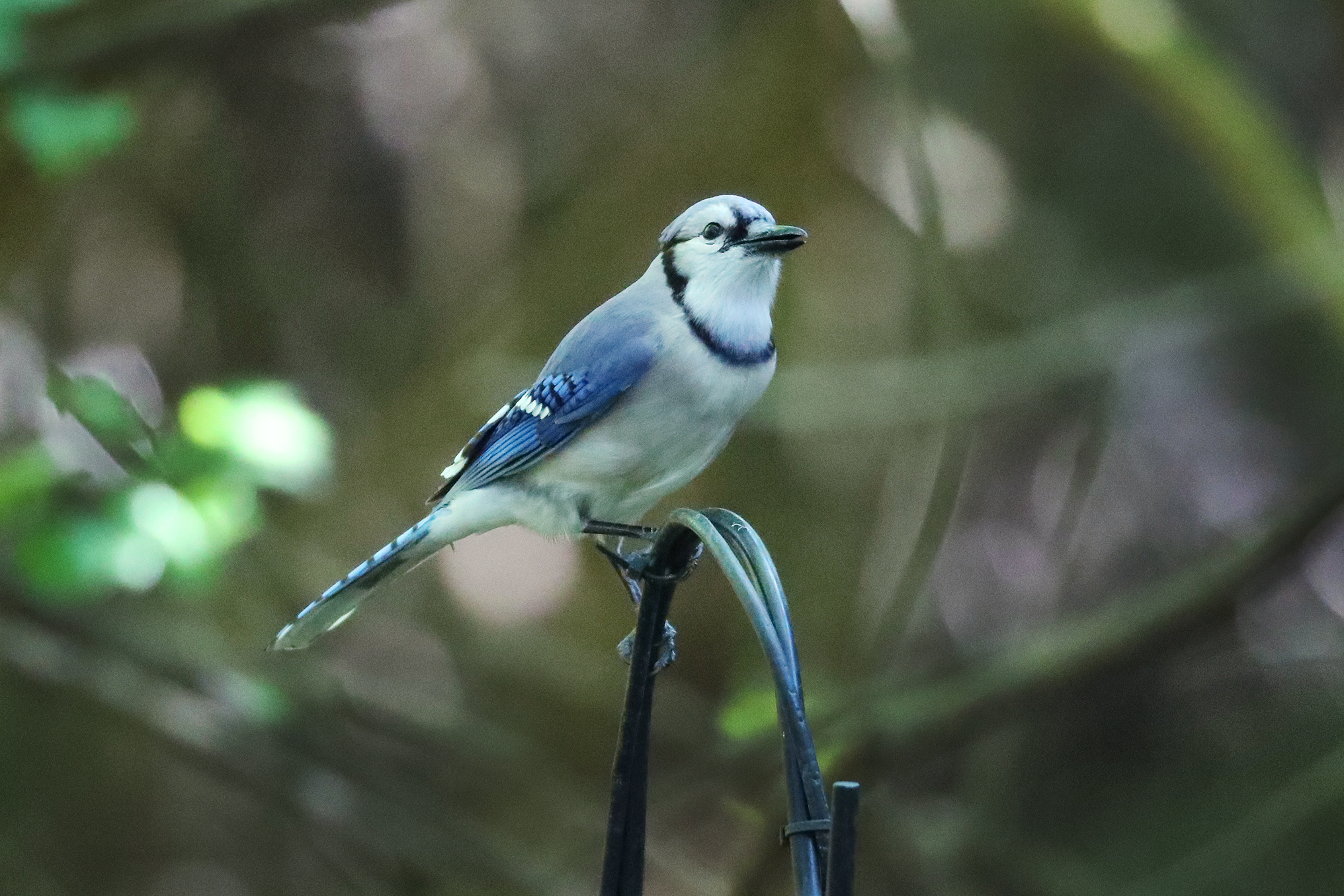
Blue jay on the water drip at Hooks Woods, the tiny forest that was the hot spot during this trip
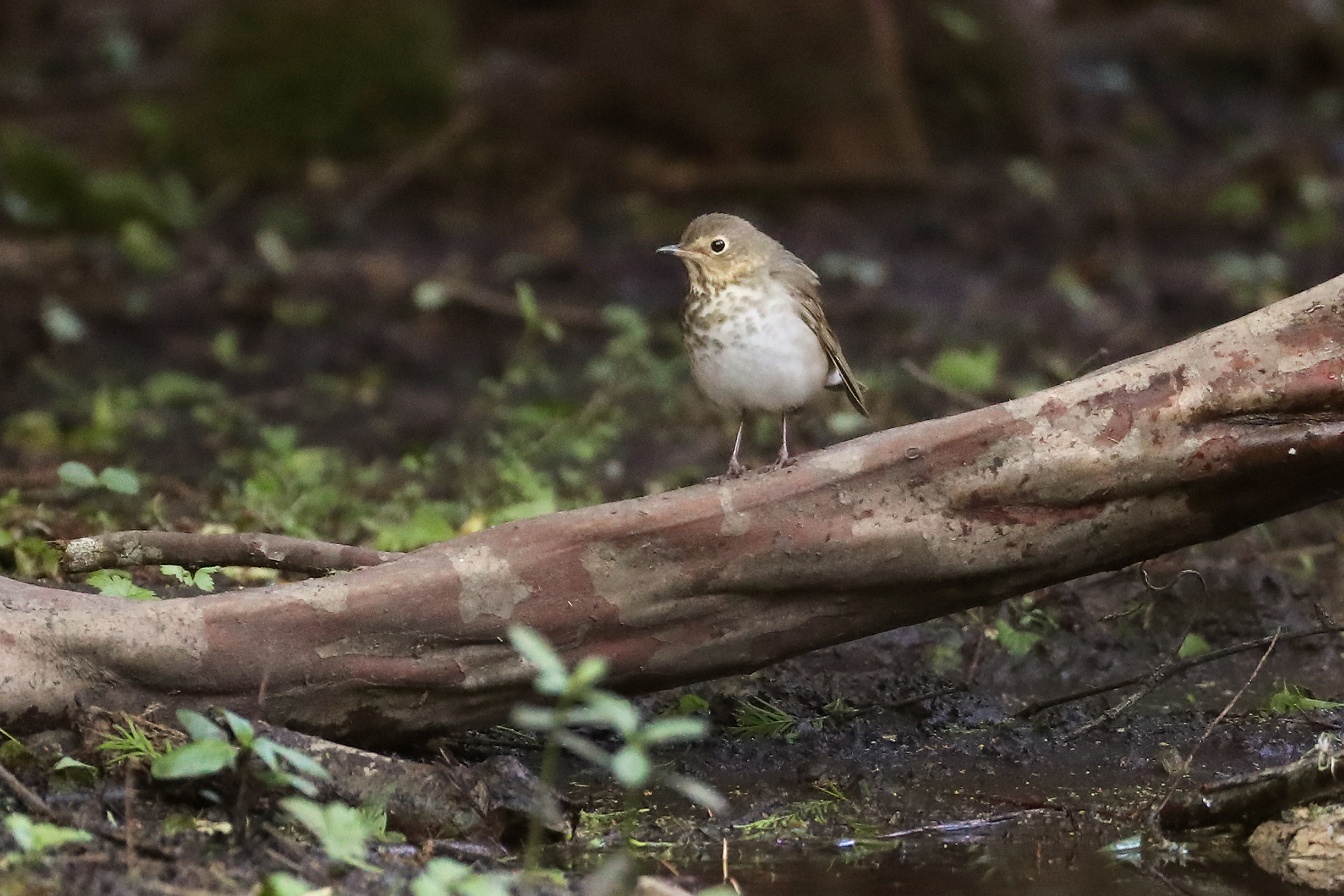
Swainson's thrush
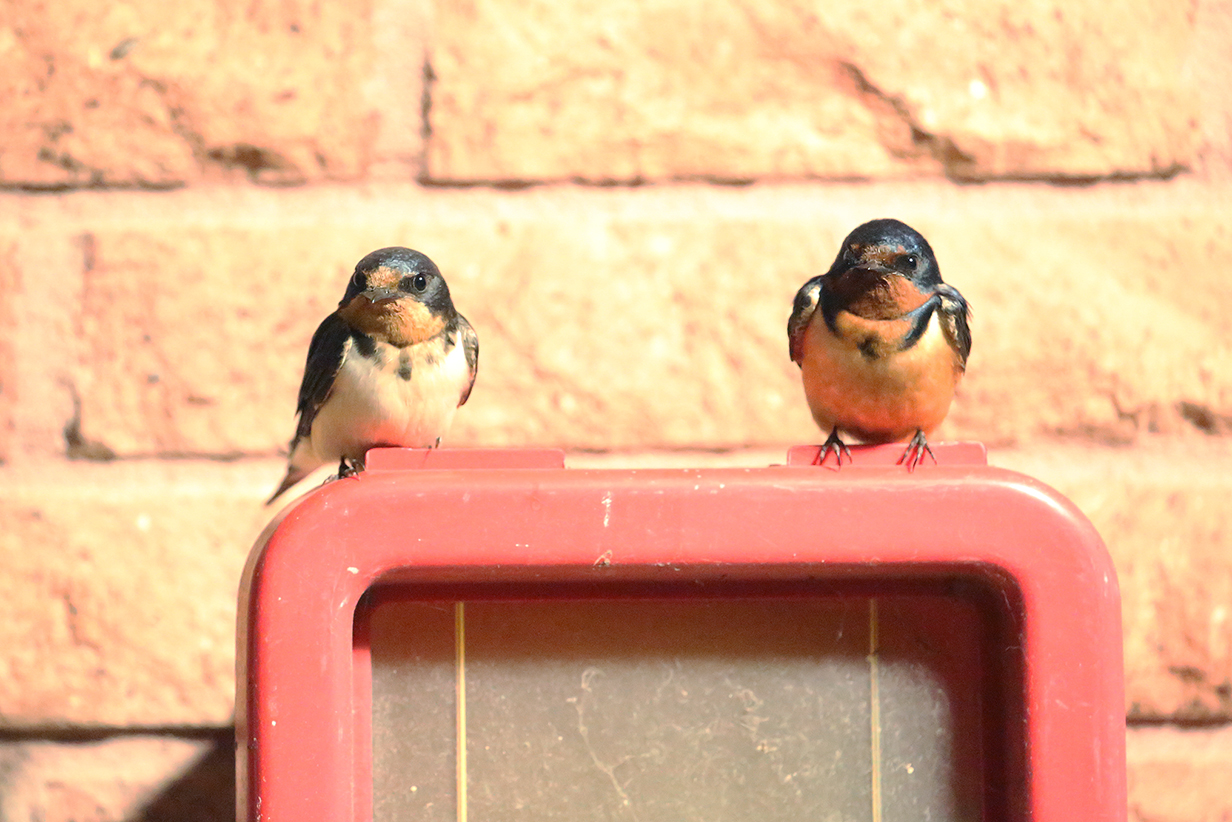
Barn swallows, sitting on the fire alarm at the Gulfway Motel in High Island, at night
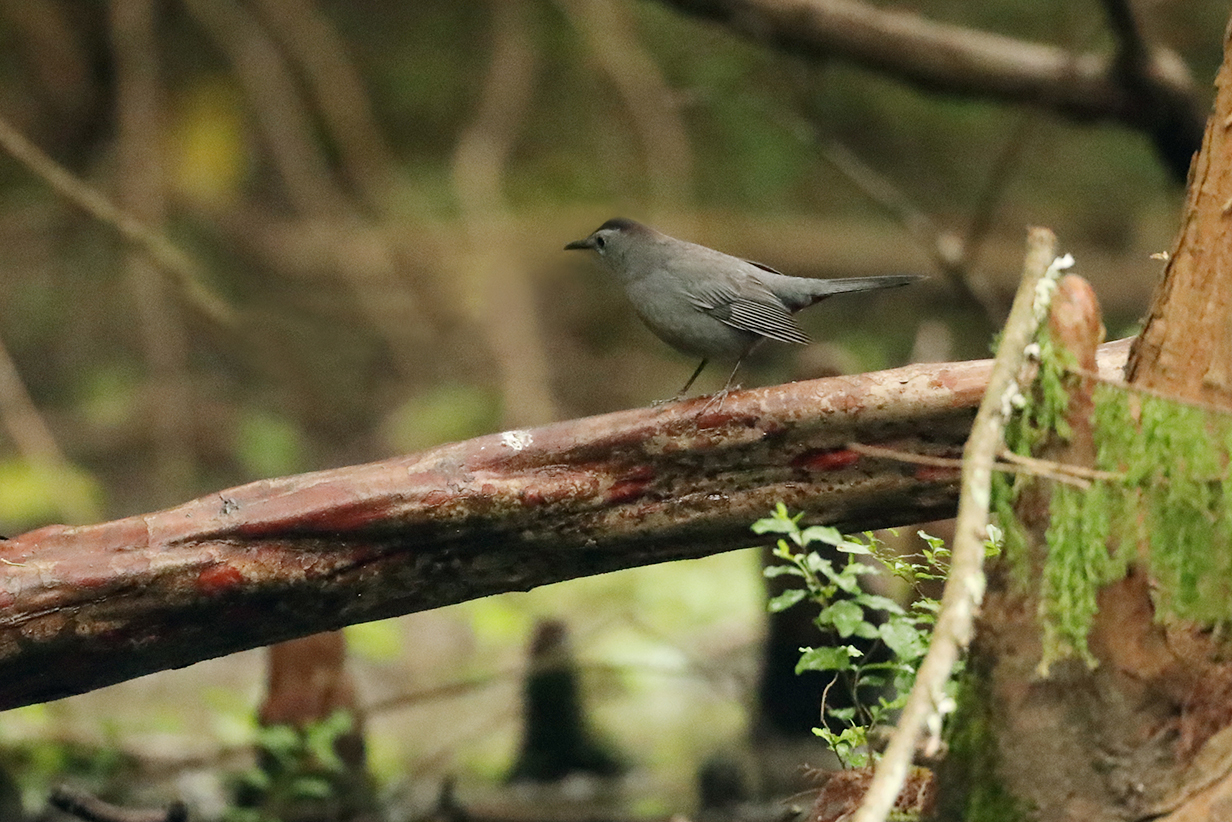
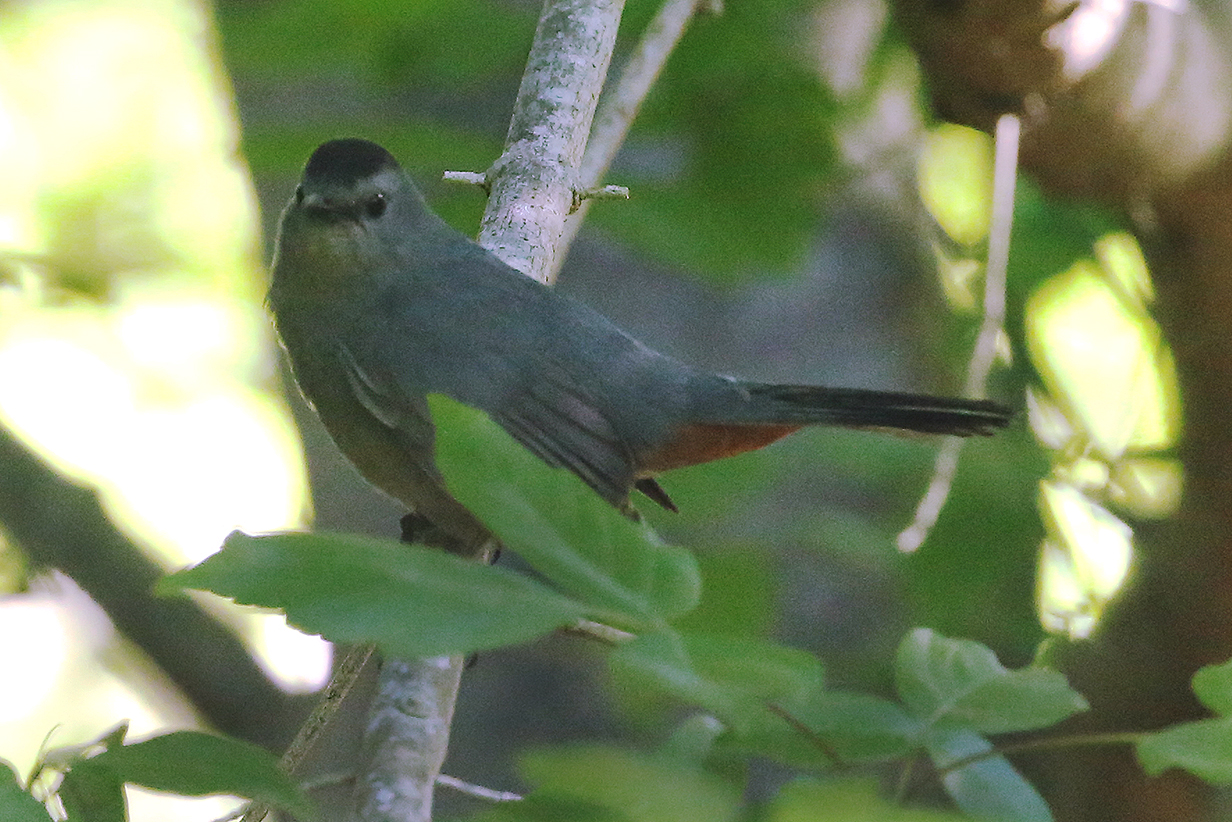
Gray catbird (For a bird as ubuiquitous as Gray catbird, it was curiously hard to photograph. It tended to stay in the shadows and hide in the bushes.)

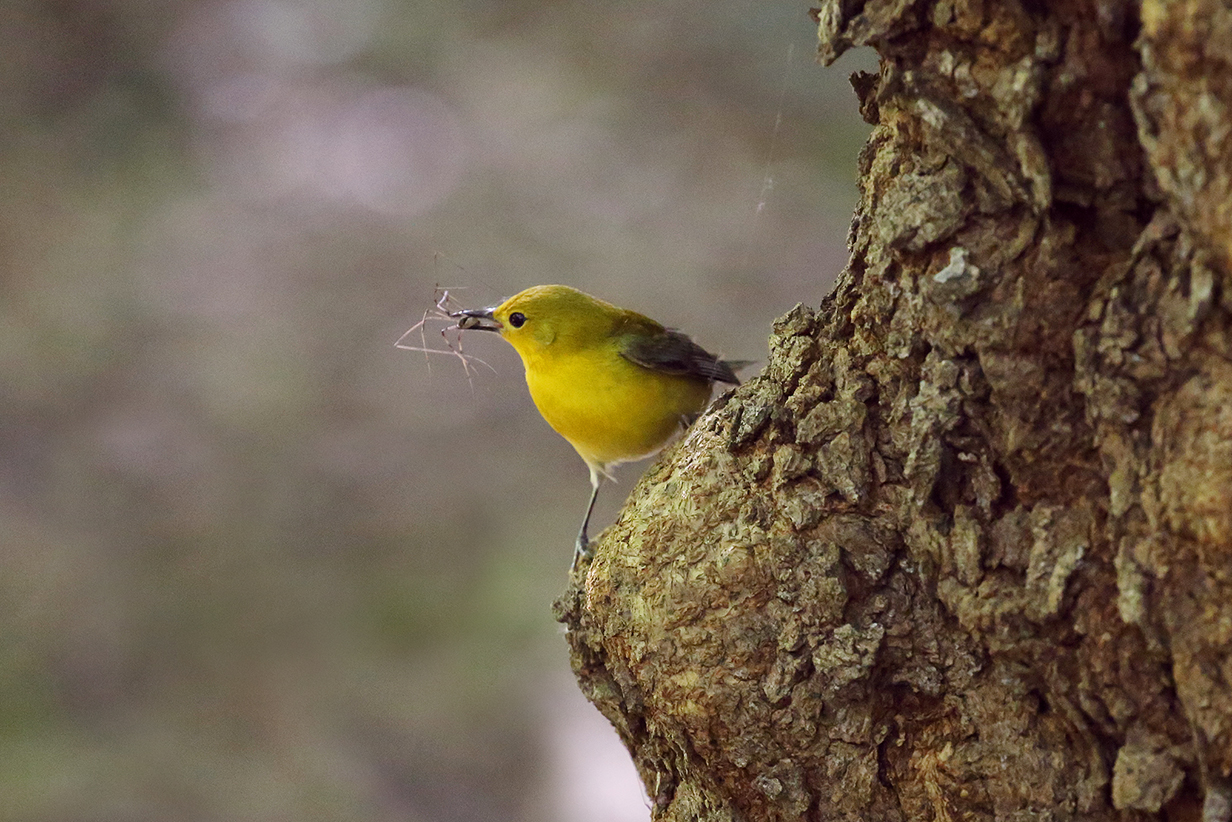
Prothonotary warbler
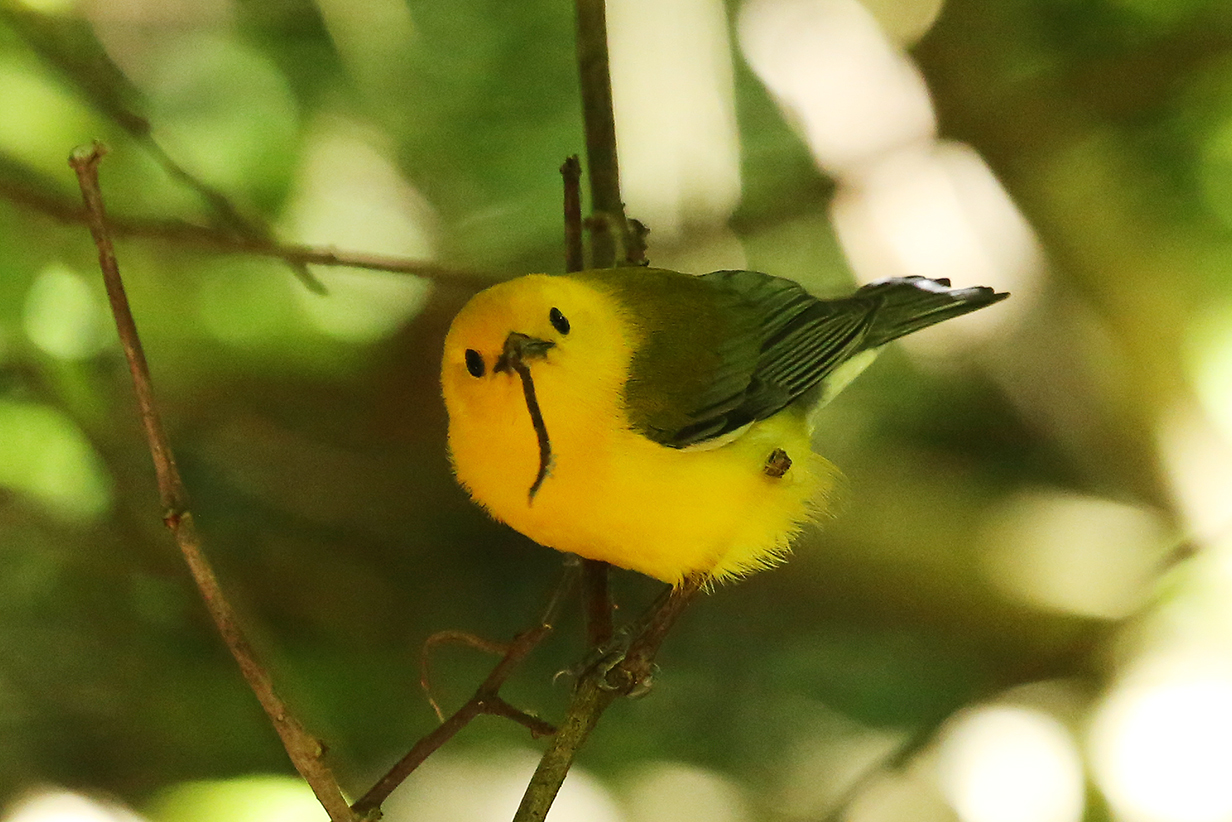
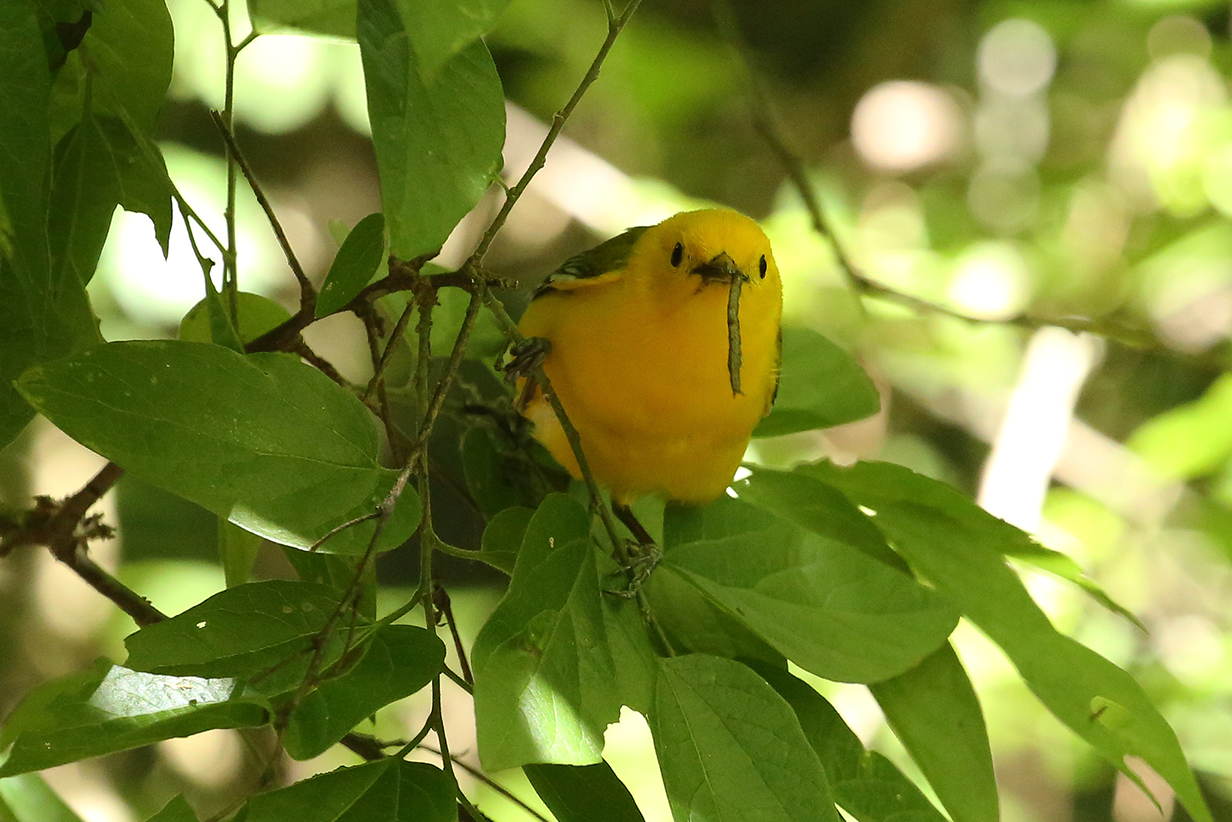
Prothonotary warbler was making a good living in a forest that was teeming with food.
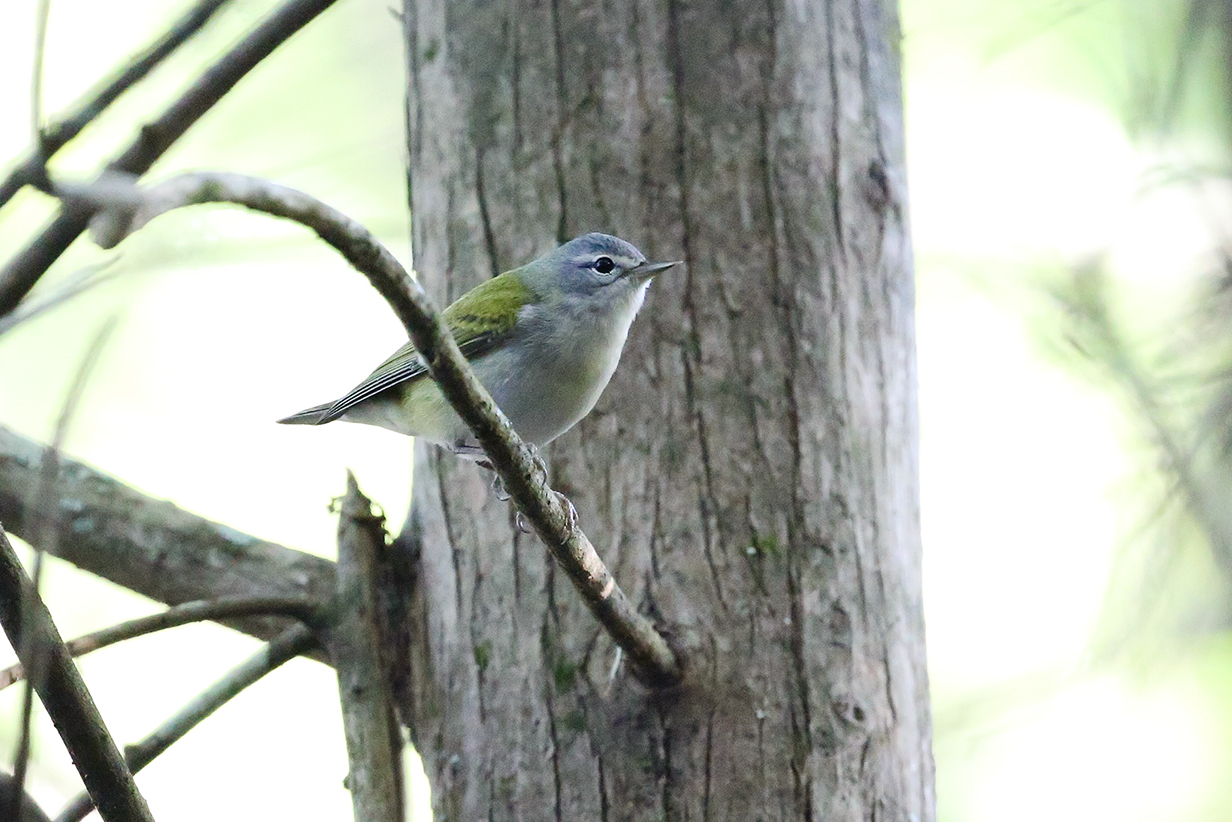
Tennessee warbler
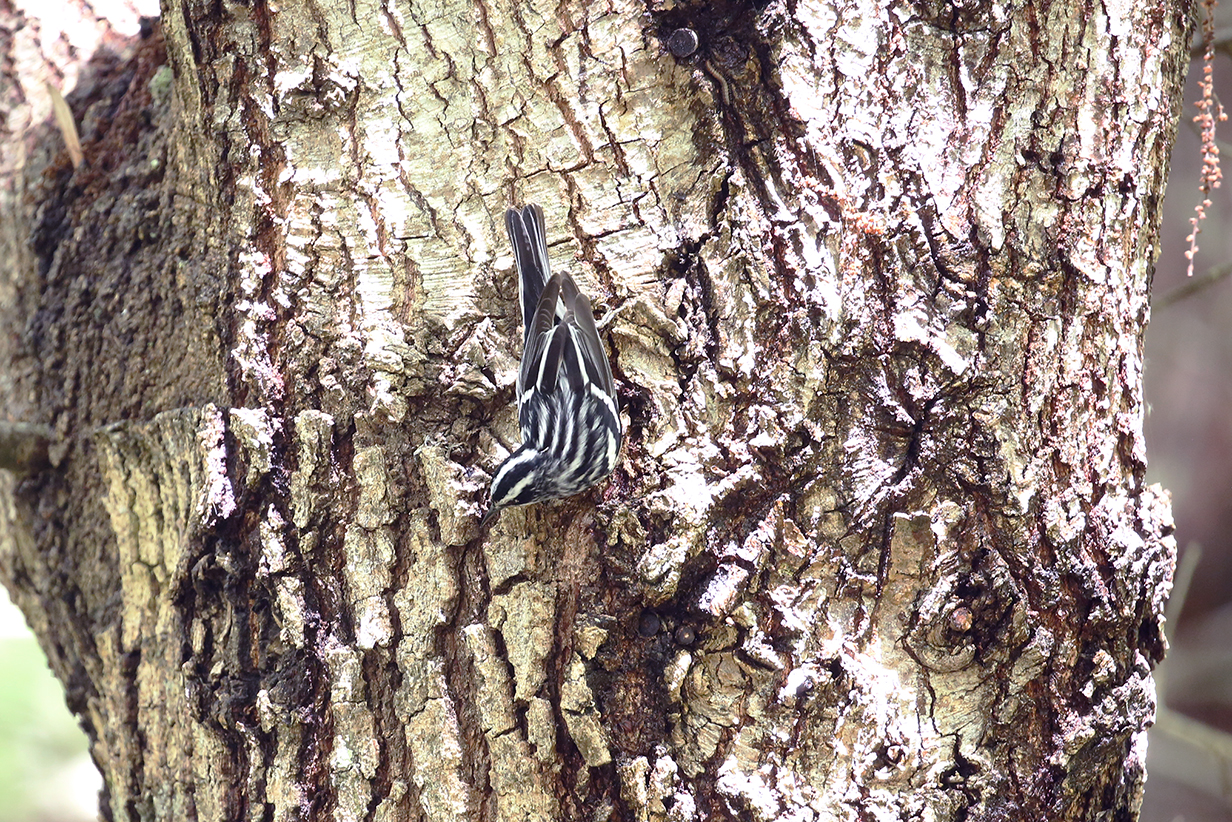
Black-and-white warbler

Kentucky warbler (I cheated a bit -- the bird is behind leaves and stems.)
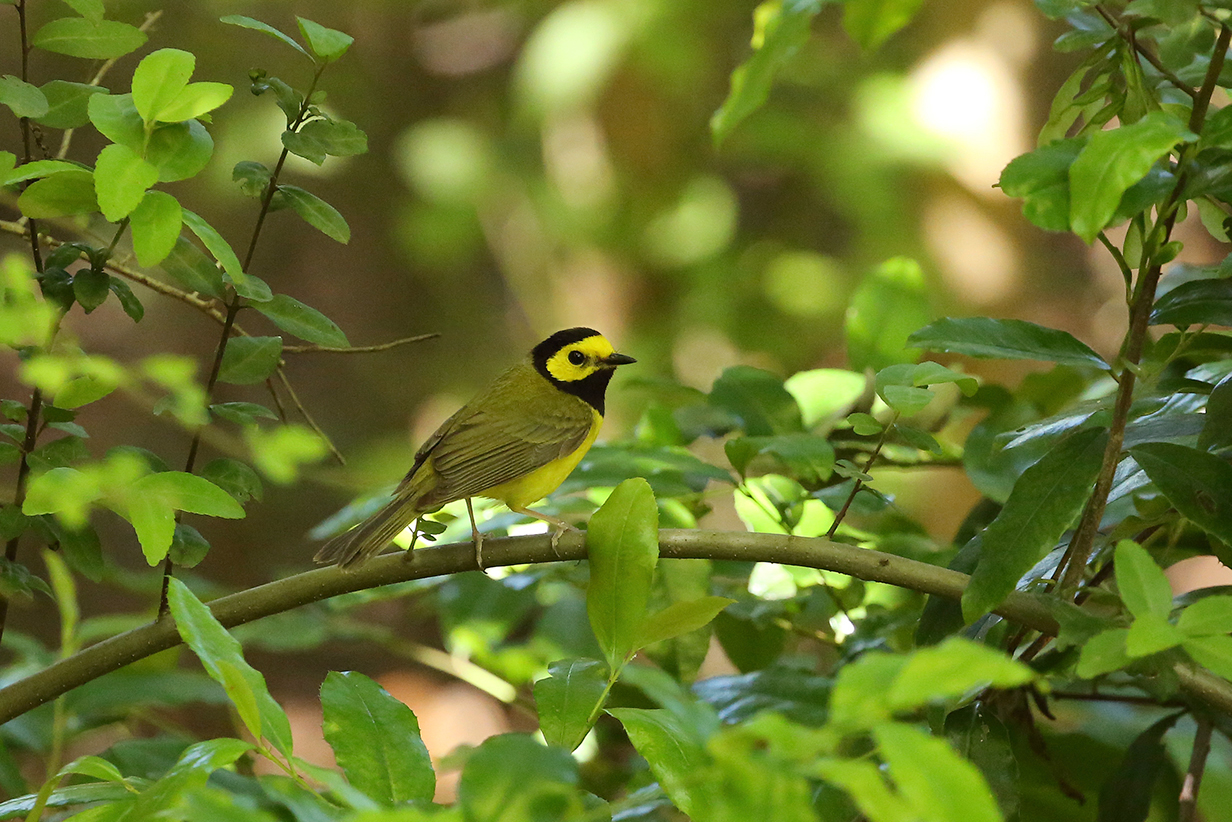
Hooded warbler
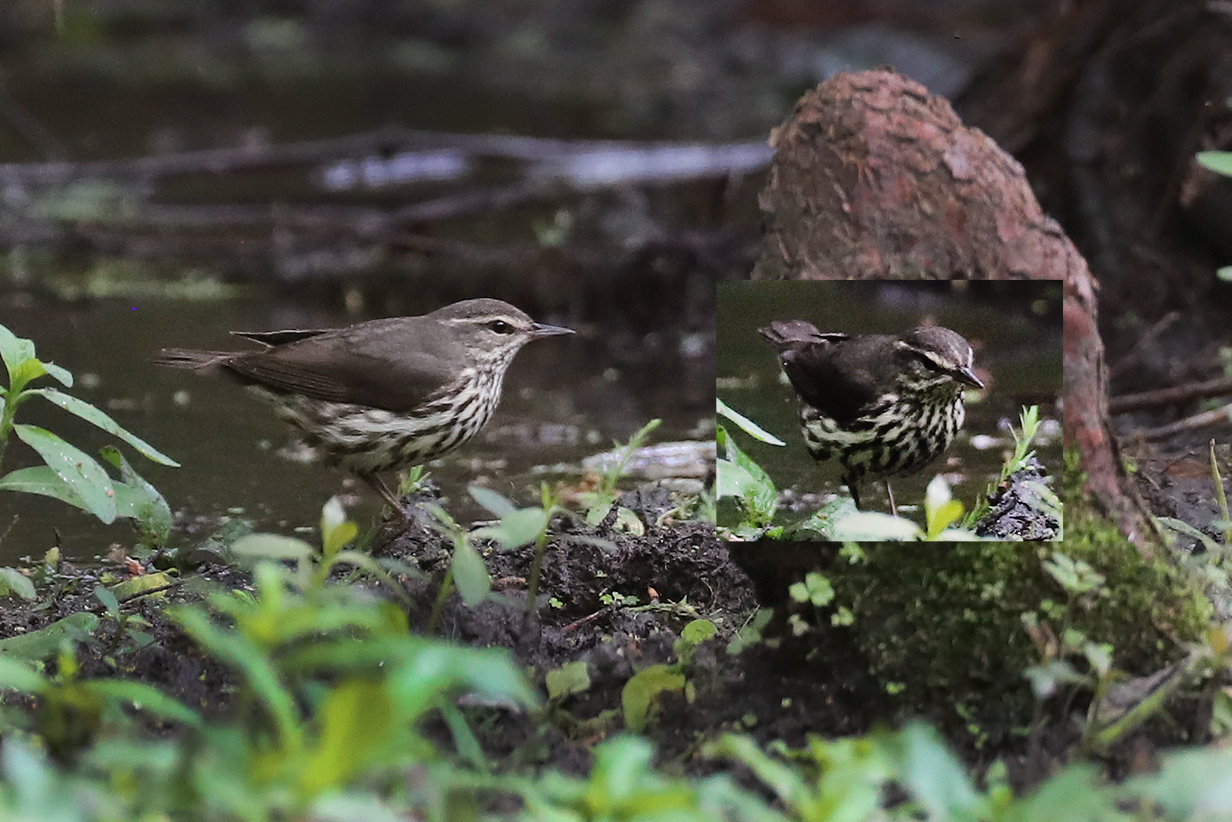
Northern waterthrush (The white eye stripe gets narrower behind the eye and the throat is finely spotted.)


Common yellowthroat (never came close)

Summer tanager (male)
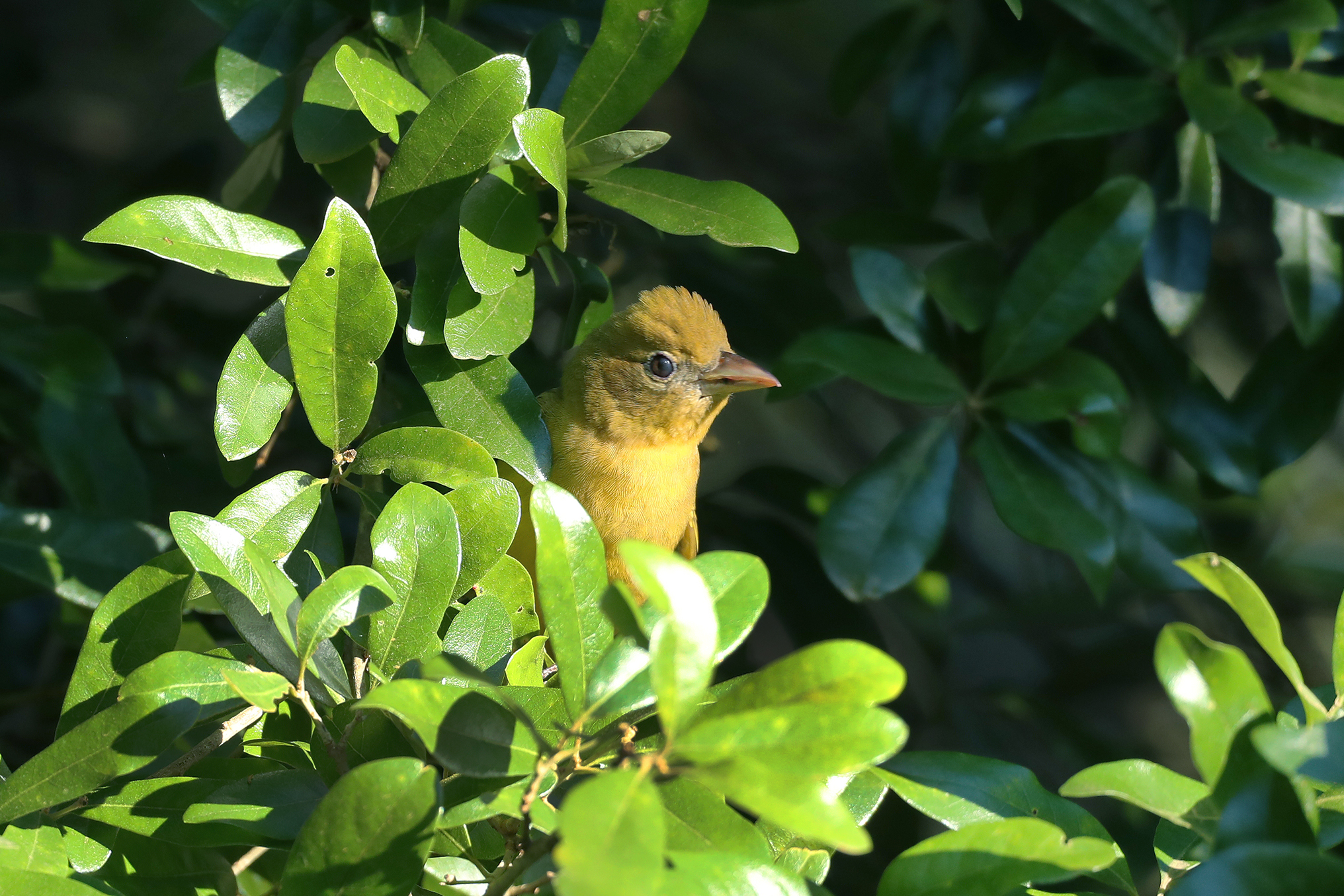
Summer tanager (female)
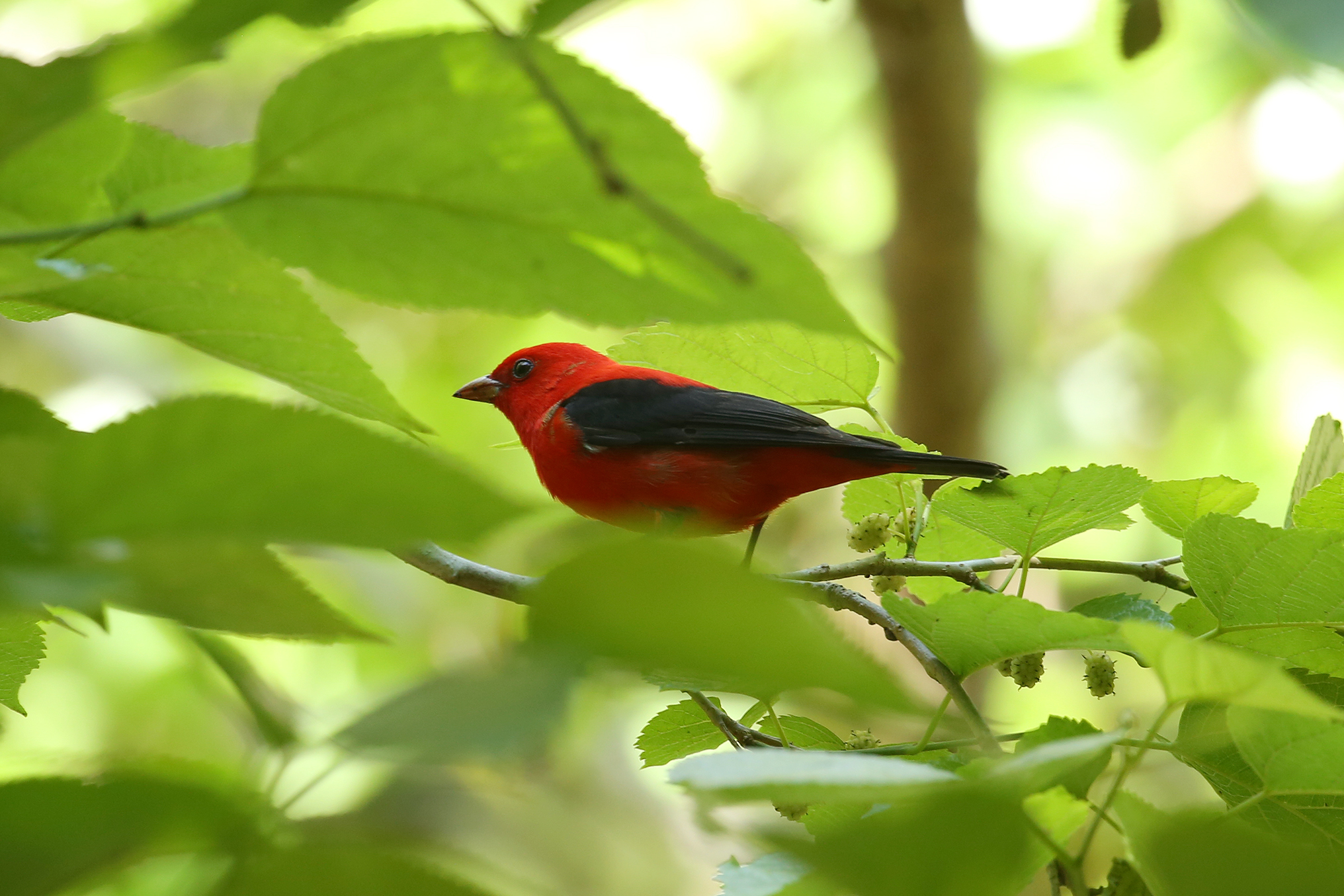
Scarlet tanager
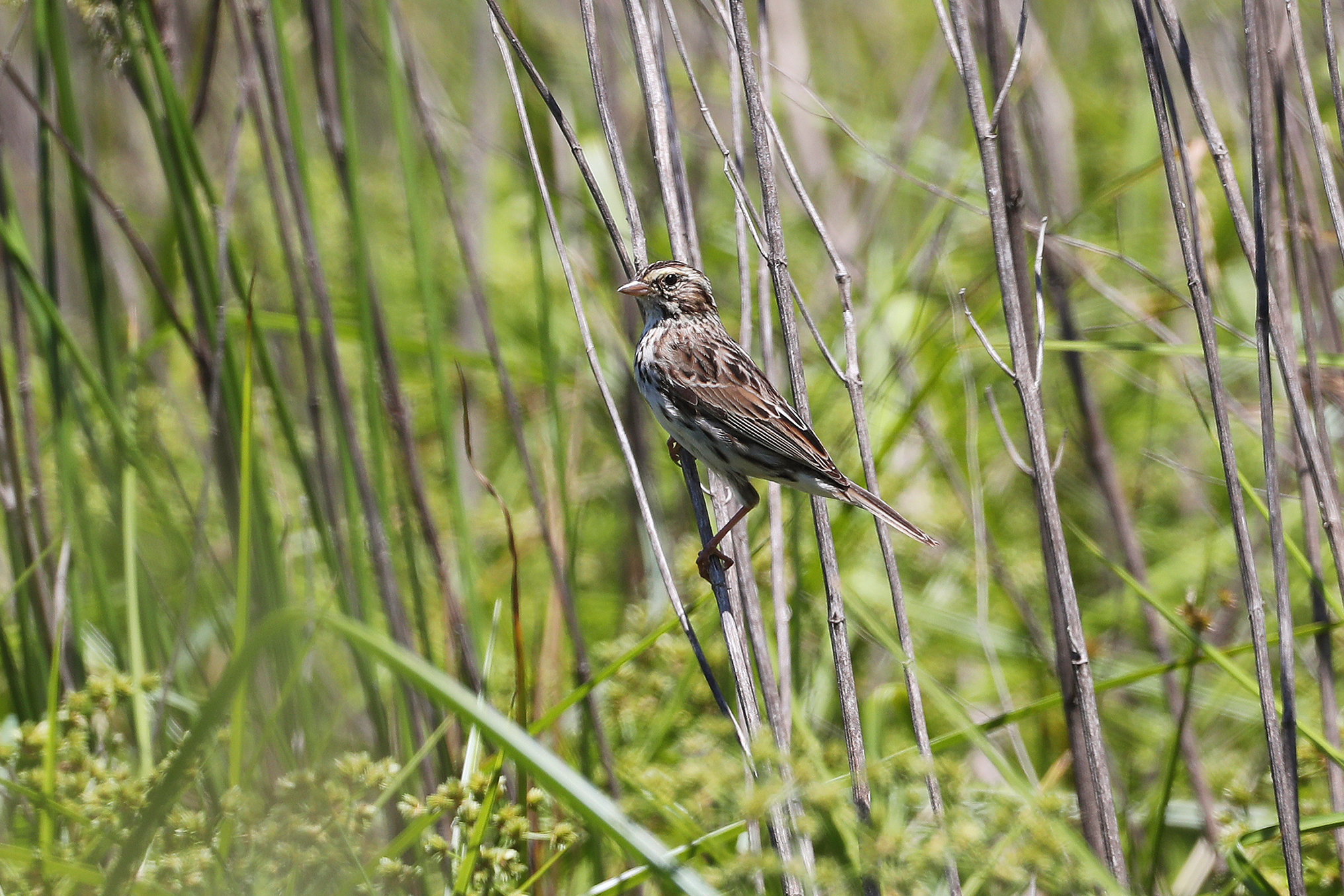
Seaside sparrow
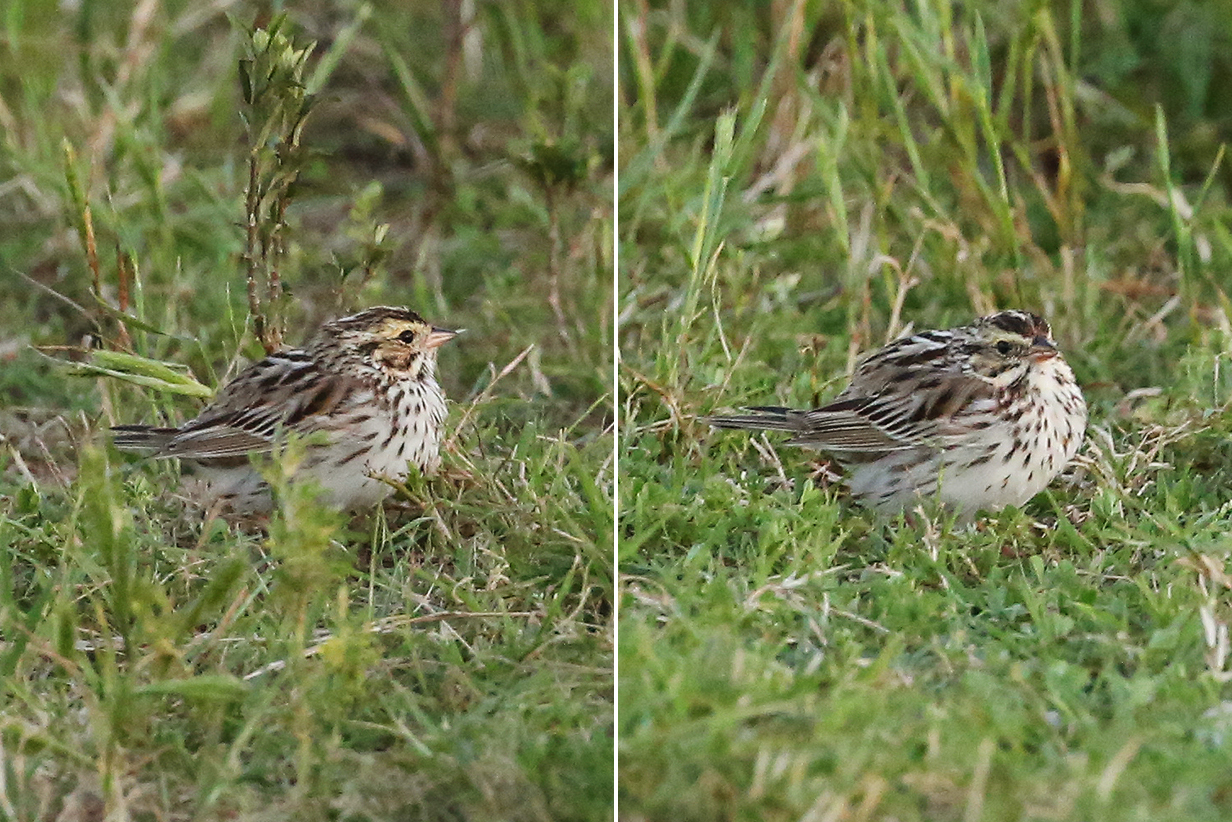
Savannah sparrow
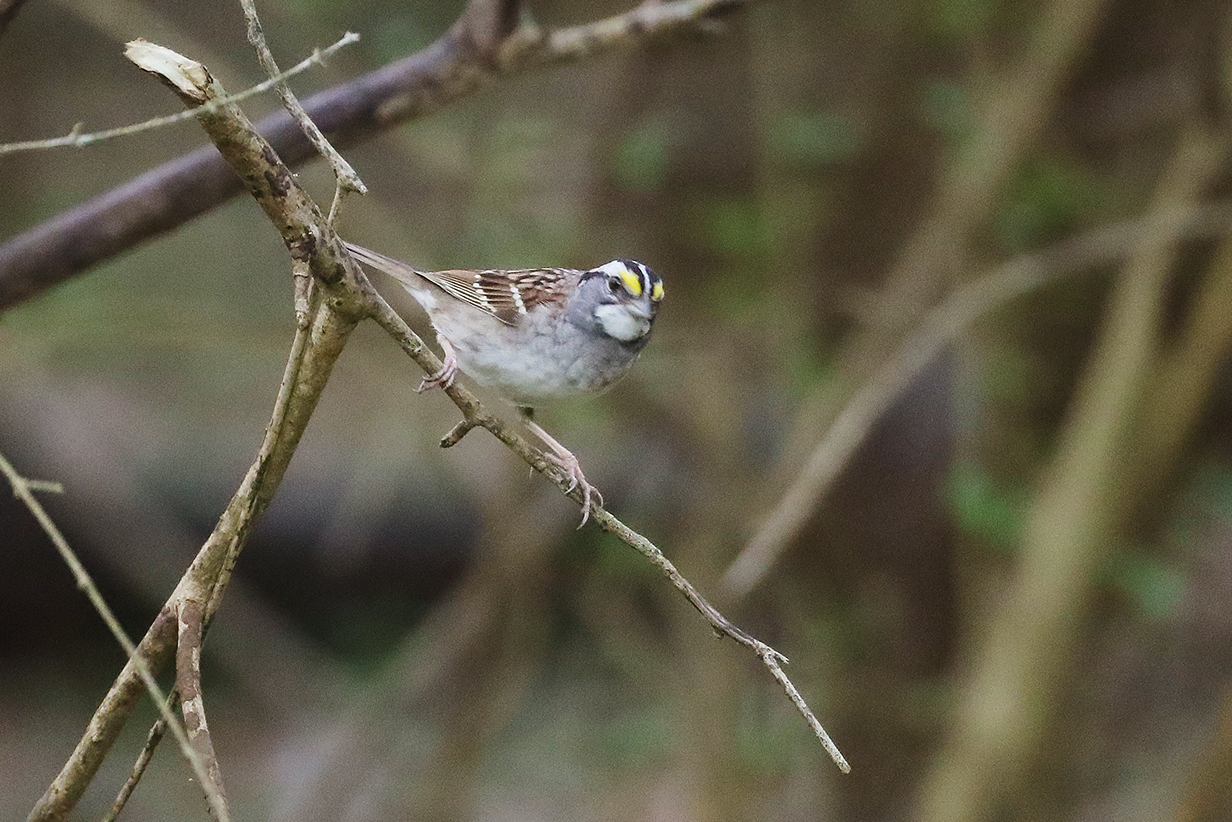
White-throated sparrow

Rose-breasted grosbeak (Spring advanced a lot during the nine days that we birded High Island. In the first few days, we still saw winter birds like Cedar waxwing. By the last two days, we were into the peak of the migration, with birds like Rose-breasted grosbeak and Baltimore oriole arriving daily ... even though we never had time to get close. By the end of the trip, it felt like winter was long gone.)
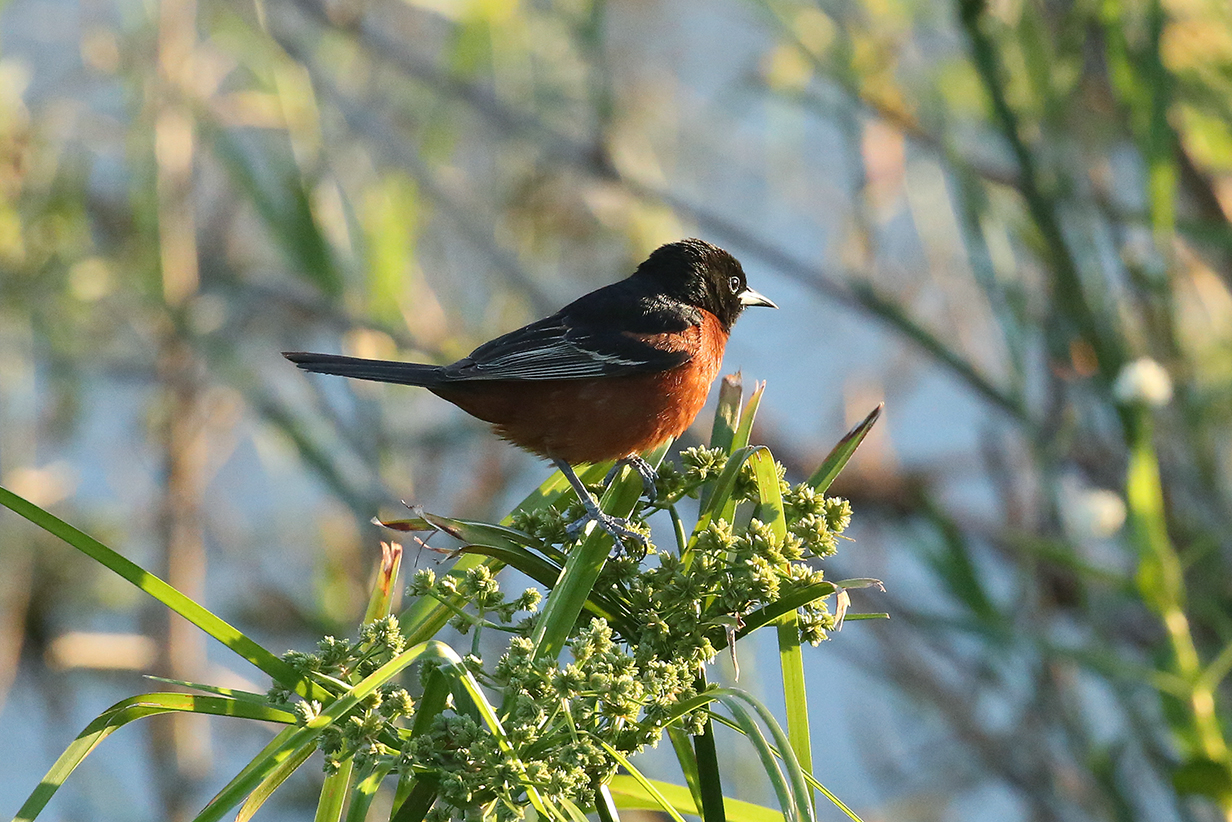
Orchard oriole
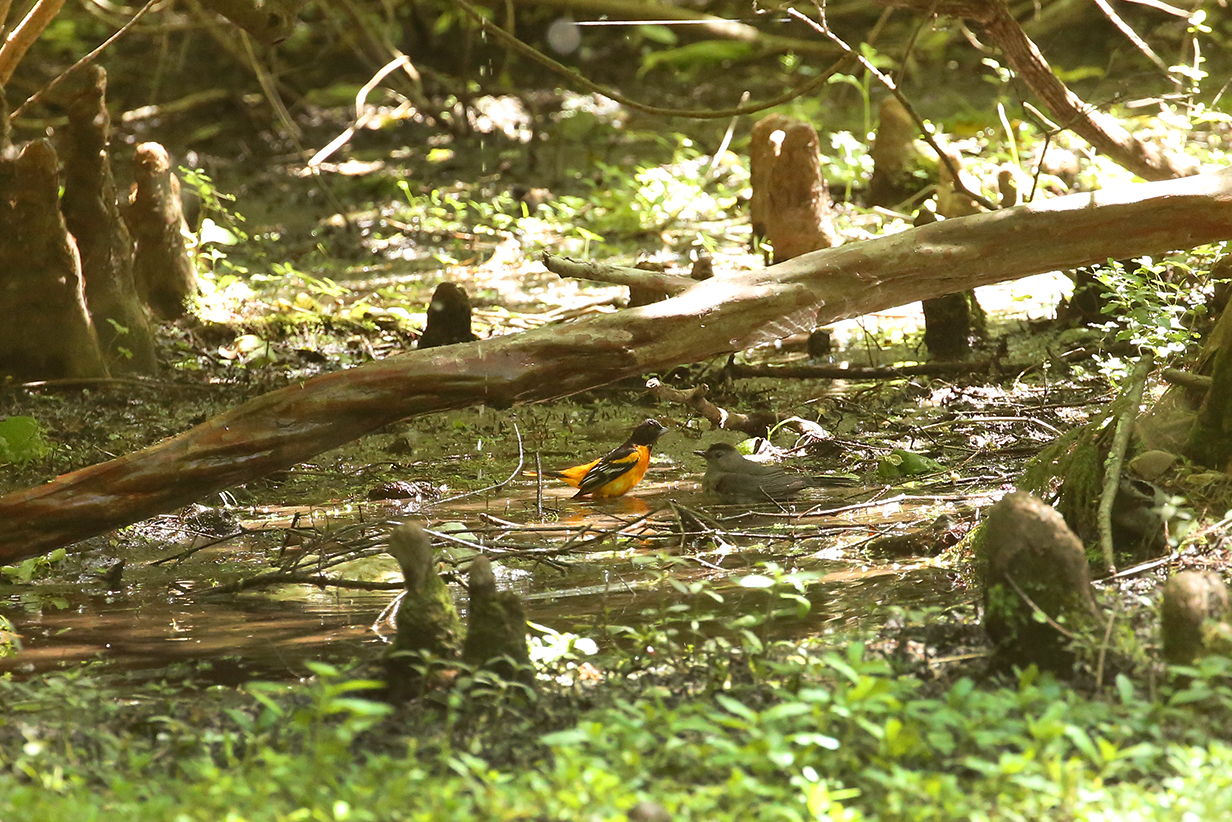
Baltimore oriole taking a bath with a Gray catbird. It's a bad picture ... but Baltimore orioles started to arrive only during our last 2 days at High Island. This is at the drip at Boy Scout Woods.
Following are our bird lists for this trip. Under the day numbers, we indicate whether (J) only John or (M) only Mary or (B) both of us saw the bird. The last two colums count the number of days that each of us saw the bird in question. We concentrated on new birds and on photography, not on seeing as many species as possible each day.
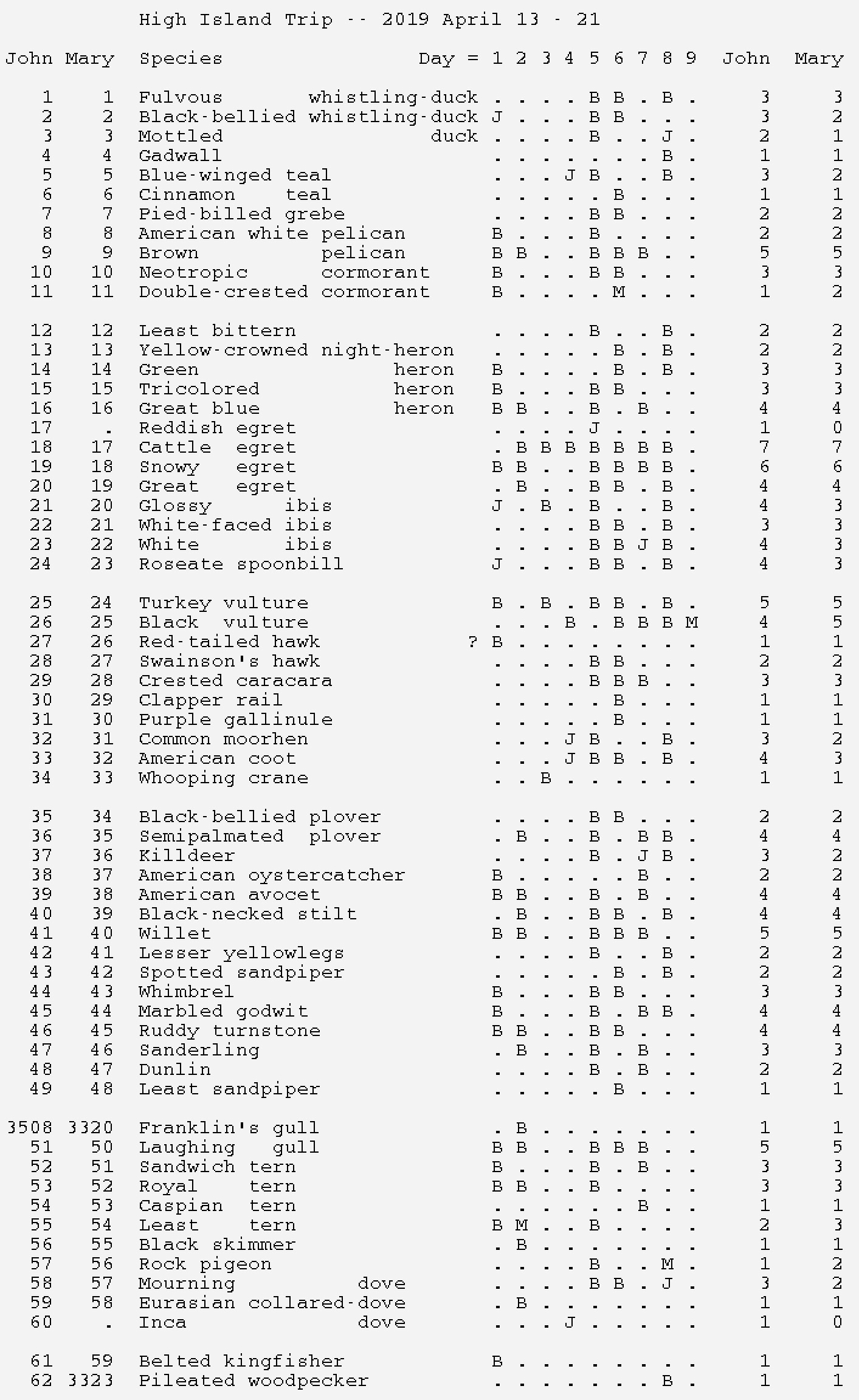

Our bird pictures from around the world follow standard ecozones approximately but not exactly:
Birds from the USA and Canada: our house, Hornsby Bend and greater Austin, Texas, California, Hawaii, Canada,
Neotropic birds from Central America and the Caribbean: Honduras, Costa Rica, Panama, Trinidad and Tobago
Neotropic birds from South America: Ecuador, Ecuador 2017, Brazil.
Western palearctic birds: Europe: Germany, Finland, Norway, Europe: United Kingdom, Europe: Spain, the Canary Islands, Europe: Lesbos, Greece, Israel
Eastern palearctic birds: China
Birds from Africa: The Gambia, South Africa
Indo-Malayan birds from India: North-west (Delhi, Uttar Pradesh, Uttarakhand) India: North-east (Assam, Arunachal Pradesh, Meghalaya) India: Central (Maharashtra, Madhya Pradesh)
Birds from Australia, New Zealand.
For our 2014 December trip to India, see this travelog.
For our 2016 May-June trip to India, see this travelog.
For our 2017 April trip to High Island, Texas, see this web site.
For our 2018 March trip to India, see this travelog.
For our 2018 May trip to China, see this travelog.
For our 2018 November trip to China, see this travelog.
For our 2019 April trip to High Island, Texas, see this web site.
For our 2019 July trip to China, see this web site.
For our 2021 April trip to High Island, Texas, see this web site.
For our 2021 December trip to Ecuador, see this web site.
For our 2022 January trip to Peru, see this web site.
For our 2022 July-August trip to Australia and Papua New Guinea, see this web site.
For our 2022 September trip to Bolivia, see this web site.
For our 2022 November-December pre-trip to Argentina (before our Antarctic cruise), see this web site.
For our 2022 November-December cruise to Antarctica, see this web site.
For our 2023 January birding in Chile, see this web site.
For our 2023 January-March cruise from Chile to Antarctica and around South America to Miami, FL, see this web site.
For our 2023 March-April birding in south Florida (after the Seabourn cruise), see this web site.
For our 2023 November-December birding to Sri Lanka, the Andaman Islands, and South India, see this web site.
For John's 2024 February-March birding in Colombia, see this web site.
For our 2024 May-June cruise from Iceland to Jan Mayen Island to and around the Svalbard Archipelago, see this web site.
For our 2024 June 25-30 stay in Paris, see this web site.
For our 2025 April 21 - May 3 trip to High Island, Texas, see this web site.